The Costs and Benefits of Solar
EnergySage CEO Vikram Aggarwal speaks with The Weather Channel team about that costs and benefits of solar, and how to get started.
The post The Costs and Benefits of Solar appeared first on Zero Energy Project.
EnergySage CEO Vikram Aggarwal speaks with The Weather Channel team about that costs and benefits of solar, and how to get started.
The post The Costs and Benefits of Solar appeared first on Zero Energy Project.
Our latest lookbook rounds up 10 living spaces that take tiling from practical to decorative, applying it to everything from bars and fireplaces to entire statement walls.
Tiles in the modern home are often consigned to the bathroom or kitchen, where their durable finish can protect walls from water damage.
But a growing cohort of designers are using the surfacing much like they would rugs or wallpapers, as a means of bringing colours and patterns into living spaces.
Whether made from ceramic, stone or concrete, this can help to imbue an otherwise cosy interior with a much-needed sense of depth and dimension.
This is the latest in our lookbooks series, which provides visual inspiration from Dezeen’s archive. For more inspiration see previous lookbooks featuring maximalist interiors, kitchens with polished granite surfaces and brutalist interiors with a surprisingly welcoming feel.
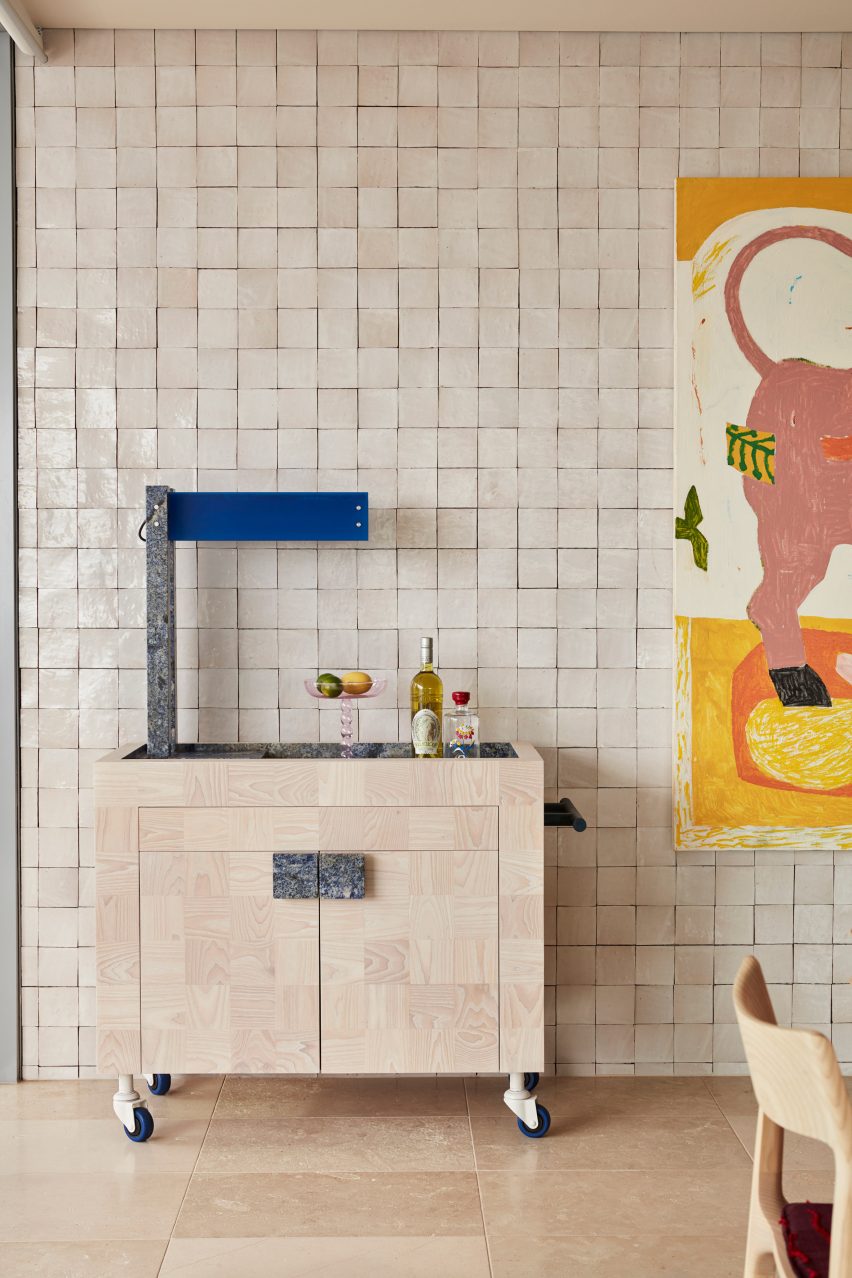
Dream Weaver penthouse, Australia, by YSG
Spanish tapas bars informed the design of this penthouse in Sydney, which belongs to a couple of empty nesters.
In the open-plan living space, this reference was translated into an entire wall of glossy off-white tiles, providing the backdrop for a custom bar trolley made from white ash and blue granite.
Find out more about Dream Weaver penthouse ›

Conde Duque apartment, Spain, by Sierra + De La Higuera
Vibrantly glazed tiles help to define the different zones in this apartment in Madrid, with green used in the kitchen, red and blue in the bathrooms and yellow in the living areas.
The traditional Moroccan zellige tiles are characterised by their tonal and textural variations, with imperfect surfaces that are moulded by hand.
Find out more about Conde Duque ›
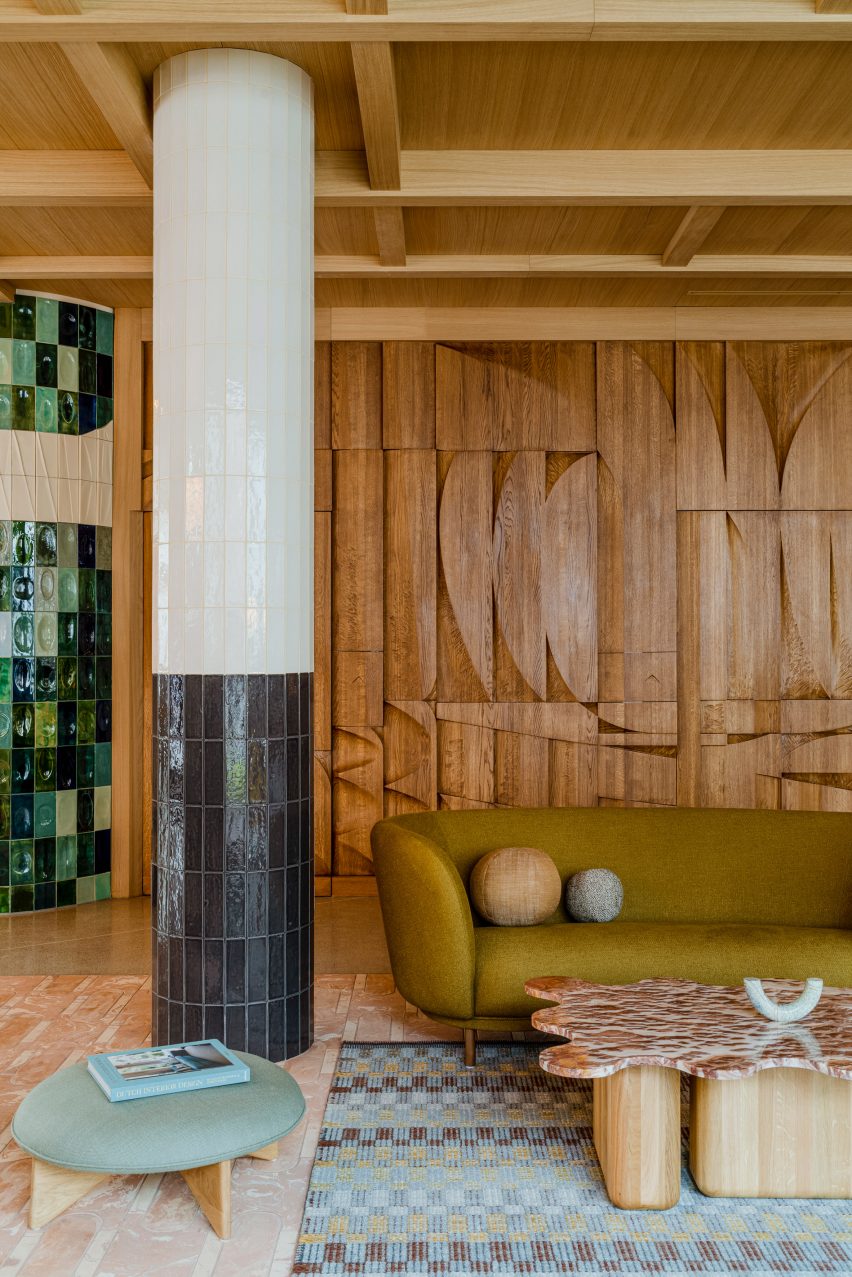
Puro Hotel Kraków, Poland, by Paradowski Studio
Polish practice Paradowski Studio mixed and matched different kinds of tiling throughout this lounge, covering everything from the floor to the columns to an entire wall, designed by artist Tomasz Opaliński based on the modernist mosaics of the 1970s.
To soften up these hard, glossy surfaces and add a sense of warmth, the studio added plenty of textiles plus a stained oak bas-relief, which a couple of doors.
Find out more about Puro Hotel Kraków ›
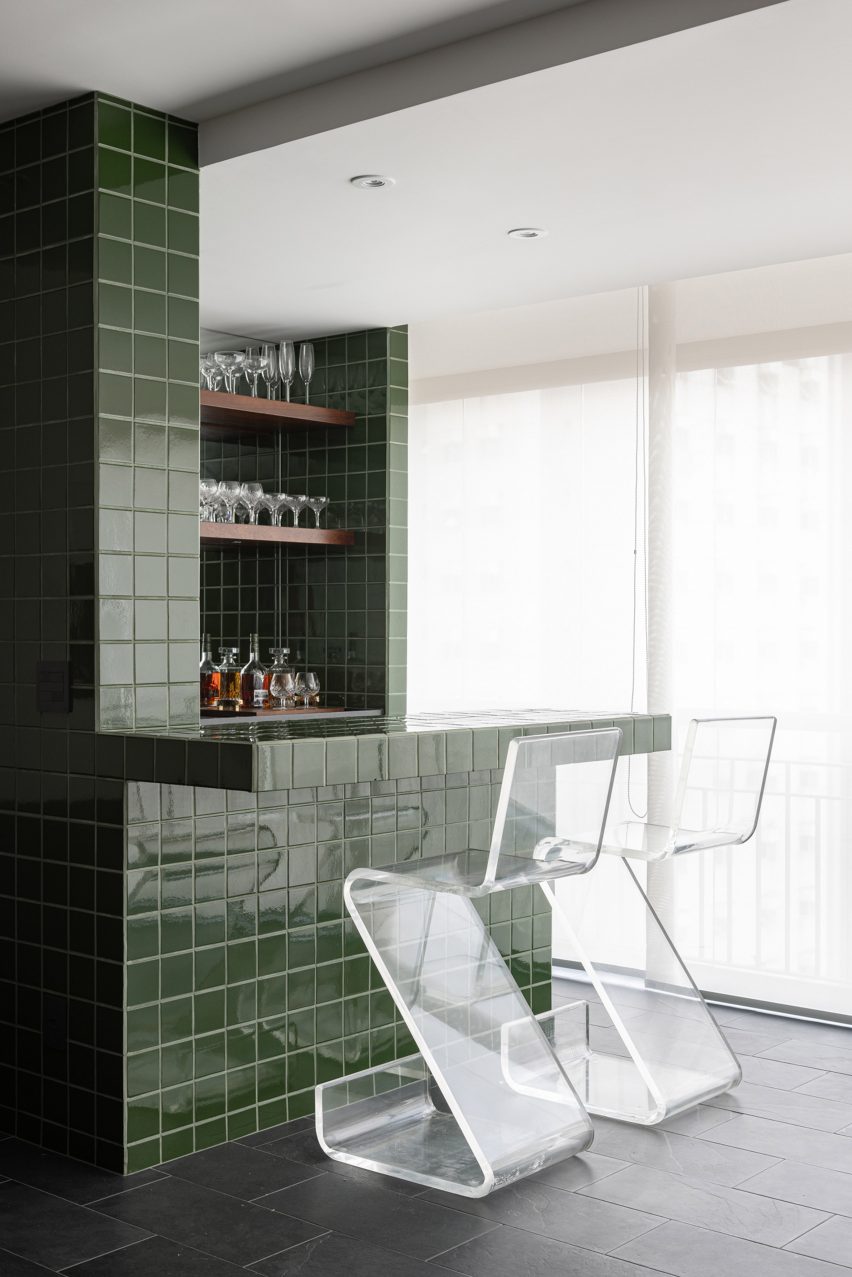
São Paulo apartment, Brazil, by Casulo
A bar clad in glossy green tiles forms the centrepiece of this living room, contrasted against the matt black slate on the floor.
Brazilian studio Casulo repeated this same material palette in the bathroom and kitchen of the São Paulo apartment, which the owners bought at a closed-door auction without seeing its interior.
Find out more about São Paulo apartment ›
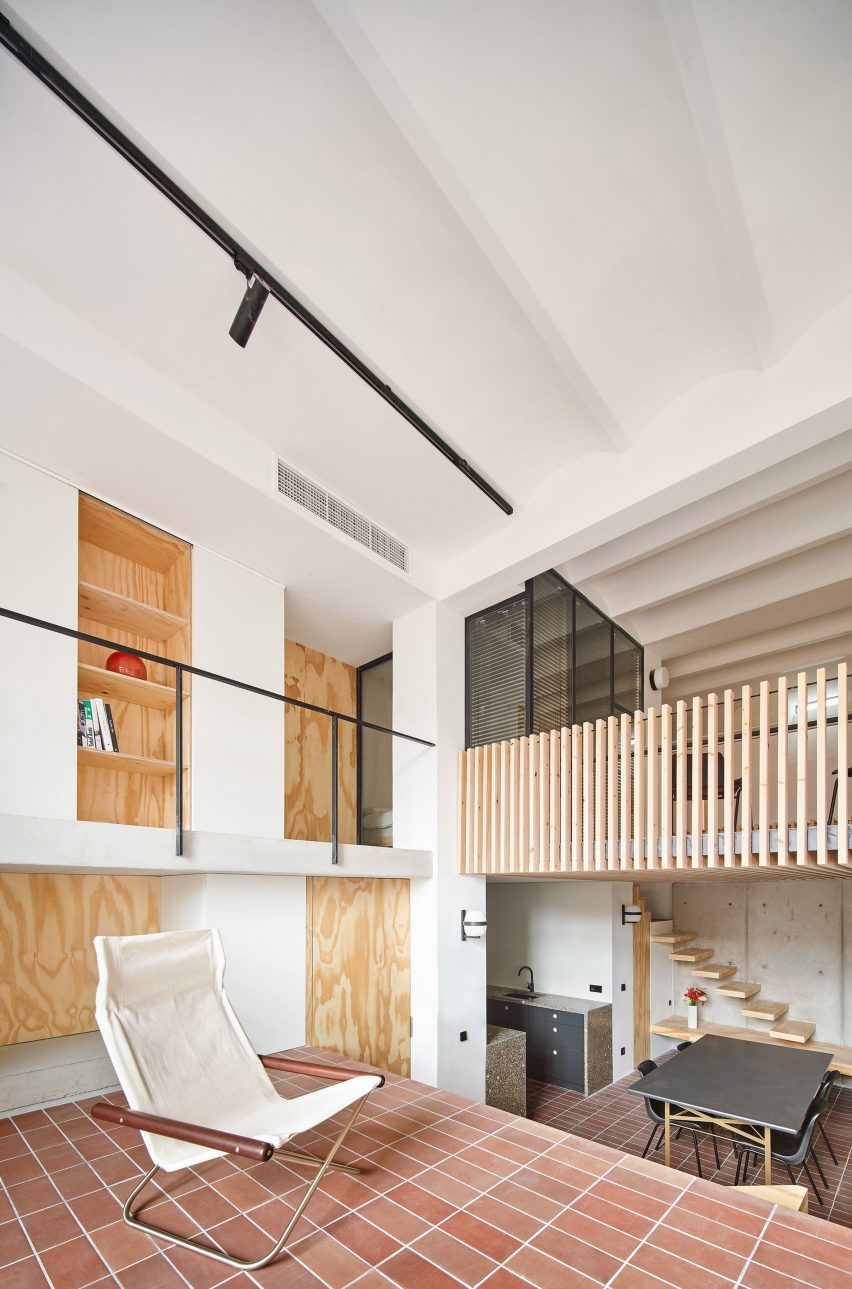
Yurikago House, Spain, by Mas-aqui
Hydraulic tiling helps to create a sense of continuity across the various different floors and half-levels of this apartment, designed by architecture studio Mas-aqui.
The natural tonal variations of the reddish-brown ceramics help to create a sense of depth and texture despite using only one material.
Find out more about Yurikago House ›
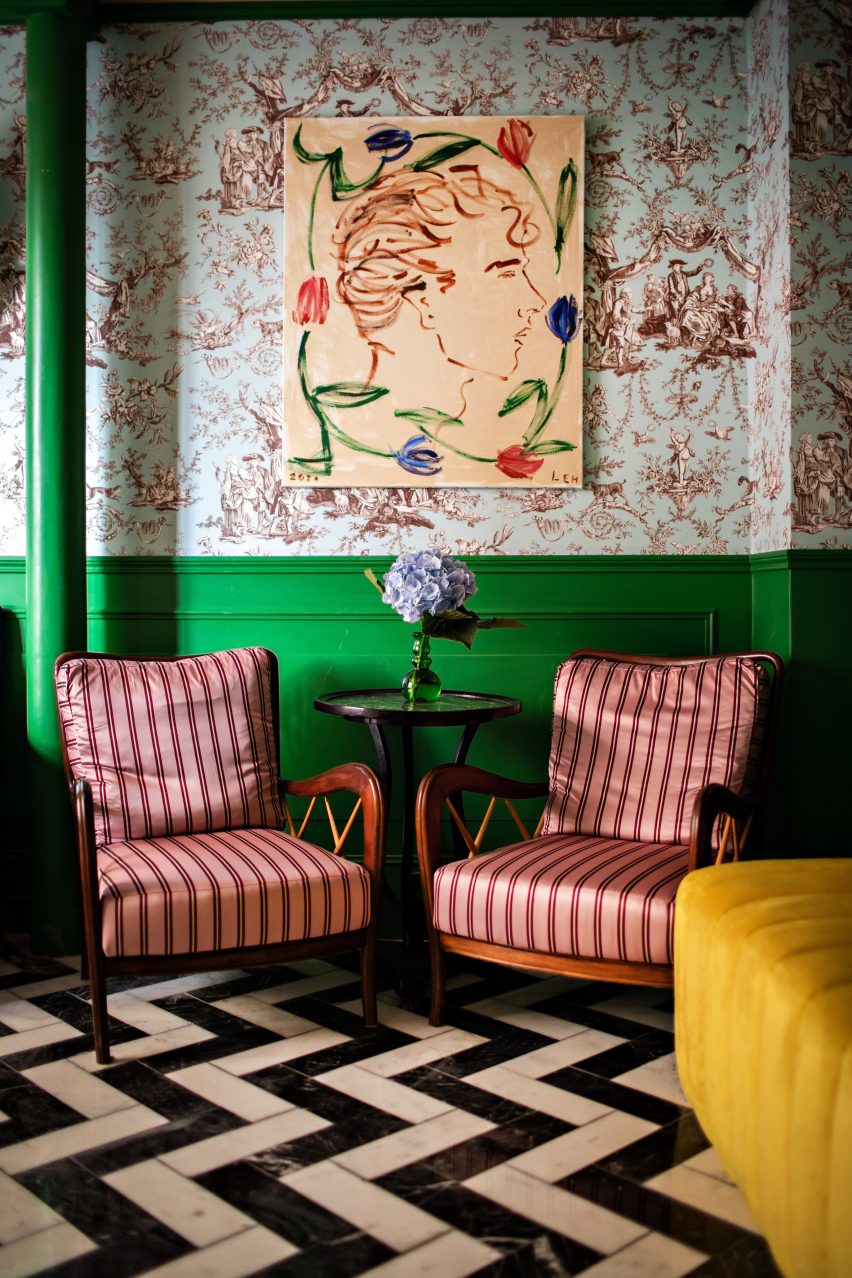
Hotel Les Deux Gares, France, by Luke Edward Hall
Chevron marble floors, striped pink-satin armchairs and chintzy duck-egg blue wallpaper create a riotous clash of patterns and colours in this lounge by British designer Luke Edward Hall.
“I really wanted this space to feel above all joyful and welcoming and alive, classic but a little bonkers at the same time,” he explained.
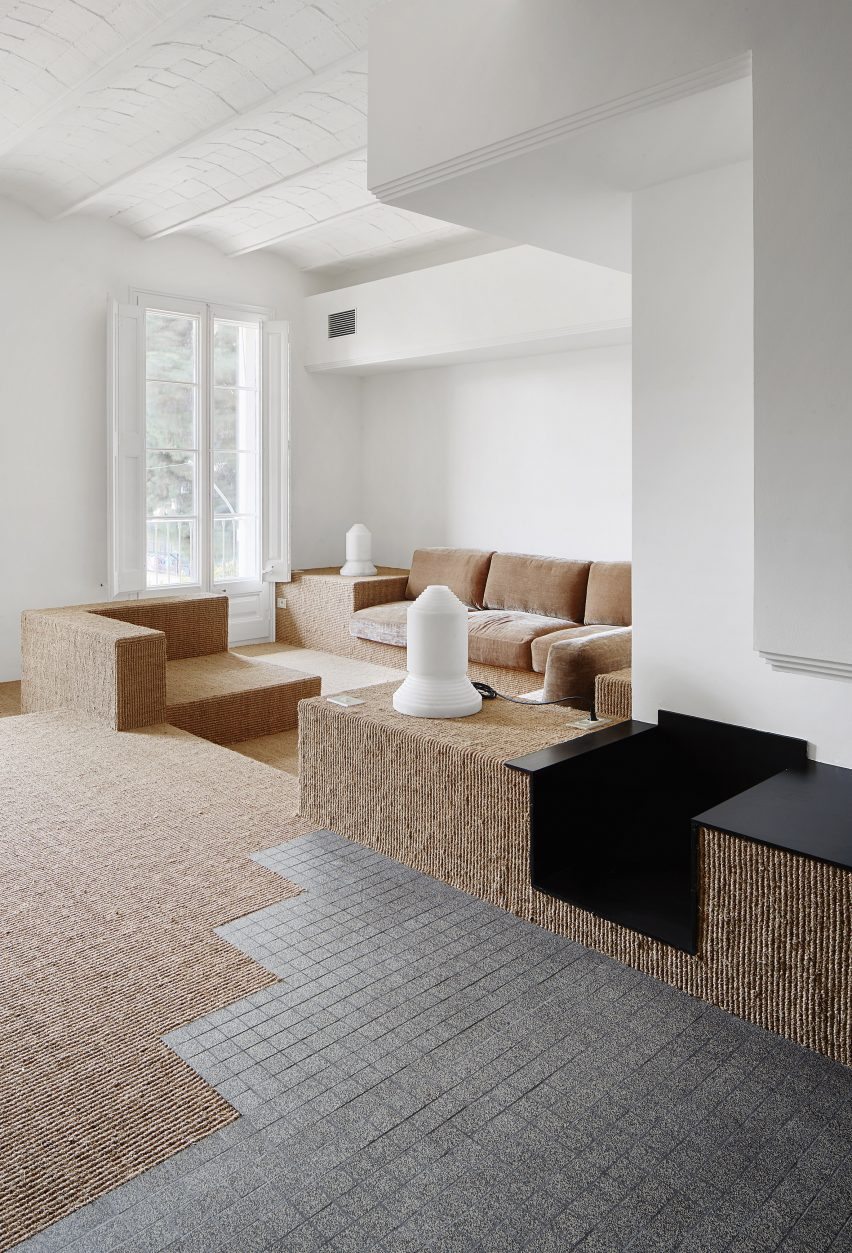
Reforma de una Vivienda en Ensanche, Spain, by Arquitectura-G
Barcelona practice Arquitectura-G removed a series of dividing walls from this apartment to let more light into the plan and relied on changing levels and flooring to denote different areas.
Here, the transition from the hallway to the lounge is signified by a zig-zagging junction between the gridded grey tiling and the neutral-toned carpet, which is made from coarse sisal plant fibres.
Find out more about Reforma de una Vivienda en Ensanche ›
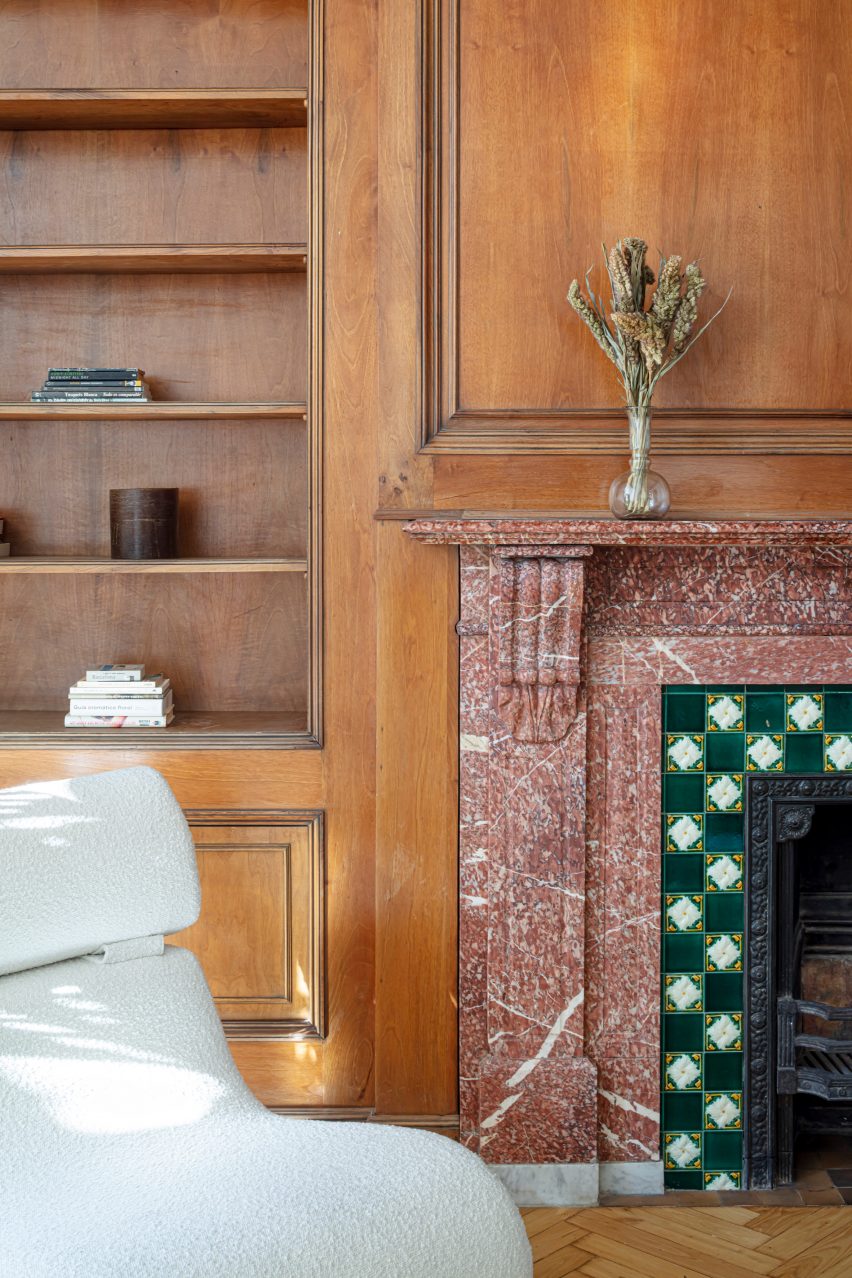
Passeig de Grácia 97, Spain, by Jeanne Schultz
A pink stone fireplace with chequered tiling served as the starting point for the renovation of this old Barcelona apartment, with doors, window frames and ceiling mouldings throughout the home painted in a matching shade of green.
Designer Jeanne Schultz also introduced minimal yet characterful modern furnishings to keep the focus on the building’s period features, which also include traditional Catalan vault ceilings and wooden parquet flooring.
Find out more about Passeig de Grácia 97 ›
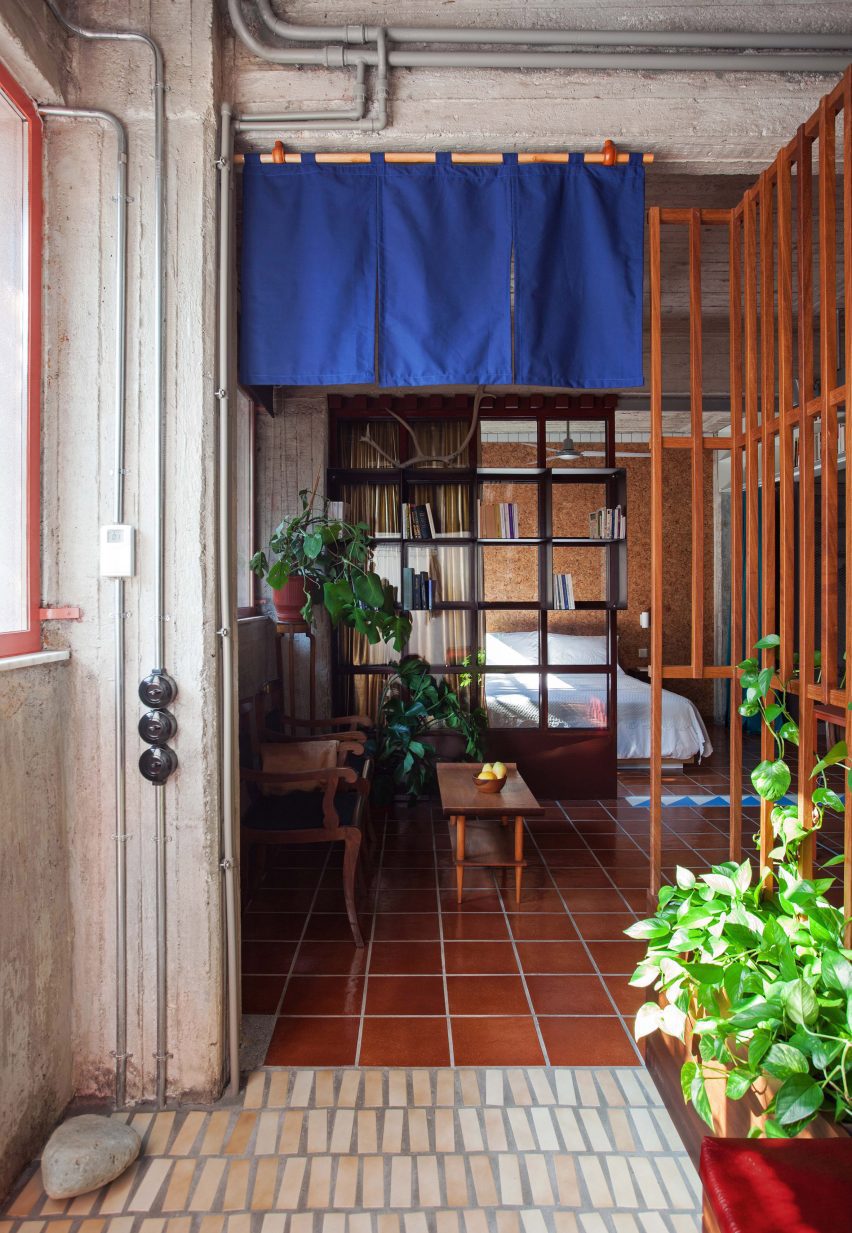
Ilioupoli apartment, Greece, by Point Supreme
Originally popular in the 1970s, when they were used to cover verandas and porticos in holiday homes throughout Greece, these glazed terracotta tiles were salvaged from storage so they could be used to cover the floor of a one-bedroom home in Athens.
Formerly a semi-basement storage space, the apartment is located at the bottom of a typical Athenian polykatoikia – a concrete residential block with tiered balconies.
Find out more about Ilioupoli apartment ›

Casa AB, Spain, by Built Architecture
When Built Architecture renovated this 19th-century Barcelona apartment, the Spanish practice retained the traditional mosaic flooring laid throughout most of its rooms, including the hallway, bedroom, living and dining room.
The spaces between the tiling were filled with oak floorboards to match the custom oak cabinetry the studio installed to run longways through the apartment like a spine, dividing up the private and communal areas.
Find out more about Casa AB ›
This is the latest in our lookbooks series, which provides visual inspiration from Dezeen’s archive. For more inspiration see previous lookbooks featuring maximalist interiors, kitchens with polished granite surfaces and surprisingly welcoming brutalist interiors.

Spotted: The e-bike revolution is here, and it is growing stronger. According to the Shimano Steps e-bike Index, a quarter of Europeans already own an e-bike, with the majority saying they will be mainly using it for leisure, hinting that the appeal of the-bike is moving past commuting. As e-biking grows in popularity, the engineering of e-bikes is becoming more sophisticated. This is where Greyp Bikes comes in, with its line of high-end, fully-connected e-bikes.
From humble beginnings with a one-off ‘e-moto’, Greyp now designs, engineers, and produces e-bikes using a blend of artificial intelligence (AI), gamification, and augmented reality. The company’s bikes are built around the electronics, starting with an integrated eSIM and built-in communication module for internet connectivity. The bike comes with two cameras, which are always recording and can be remotely accessed. Greyp claims the connectivity will eventually allow competition and content sharing in real-time, “turning the sensor-packed bikes into a gaming platform”.
The bikes come in a variety of models, including mountain bikes and hardtail. They feature a powerful 700-watt-hour battery, a carbon fibre composite frame and 150-millimetre travel front and back enduro geometry. One model, the G12S, combines features from both motorcycles and bicycles, along with regenerative braking and a planetary gearbox, and can reach speeds of 70 km/h.
Not content with simply building a better bike, Greyp aims at a bike that is as connected as any other e-vehicle – but with more outdoors. The company describes itself as “a wild bunch of bikers, gadget geeks and outdoorsy types, and we incorporate all those passions into each product we create,” adding, “Our number one advantage / asset is our creativity. We just want to create stuff constantly.”
The growing popularity of e-bikes is being driven by a number of factors, including environmental concern, a desire for exercise and the high cost of commuting on public transit. So, it’s no surprise that Springwise is seeing a big influx of innovative e-bikes, from multi-use e-bikes that can transport both people and goods to e-rickshaws.
Written By: Lisa Magloff
With a growing focus on the environmental impact of aviation, architects are designing a new generation of airports focused on sustainability. Here is a roundup of 10 recent projects designed to have reduced carbon emissions.
The examples collected below include airports that use timber, solar panels, modular construction and even a giant waterfall in an attempt to limit their impact on the planet.
They have emerged amid criticism levelled at several major architecture firms over the last few years for their involvement in airport projects due to the significant emissions associated with flying.
In a particularly high-profile example, UK studios Foster + Partners and Zaha Hadid Architects withdrew from the climate action network Architects Declare in 2020 following a row about their work in the aviation industry.
Foster + Partners founder Norman Foster later accused architects who walk away from airport projects over environmental concerns of hypocrisy, arguing that the profession should be seeking to help cut aviation’s carbon footprint by building more sustainable airports.
Below are 10 airport projects, both completed and upcoming, that claim to be more sustainable:
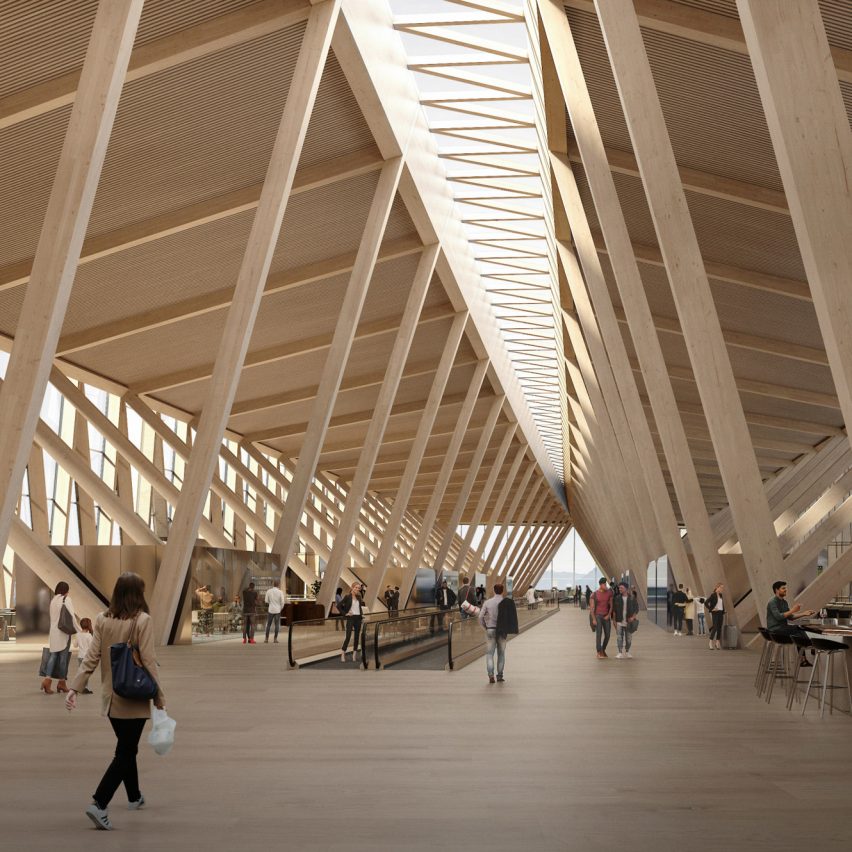
Dock A at Zurich Airport, Switzerland, by BIG and HOK
Danish architecture studio BIG and US firm HOK last week revealed their design for a mass-timber terminal and control tower at Zurich’s airport, set to open in 2032.
Large V-shaped columns made from locally sourced timber will form the main structure of the terminal, while wood will also be used for the floors and ceilings reflecting Switzerland’s alpine buildings.
Find out more about Dock A ›
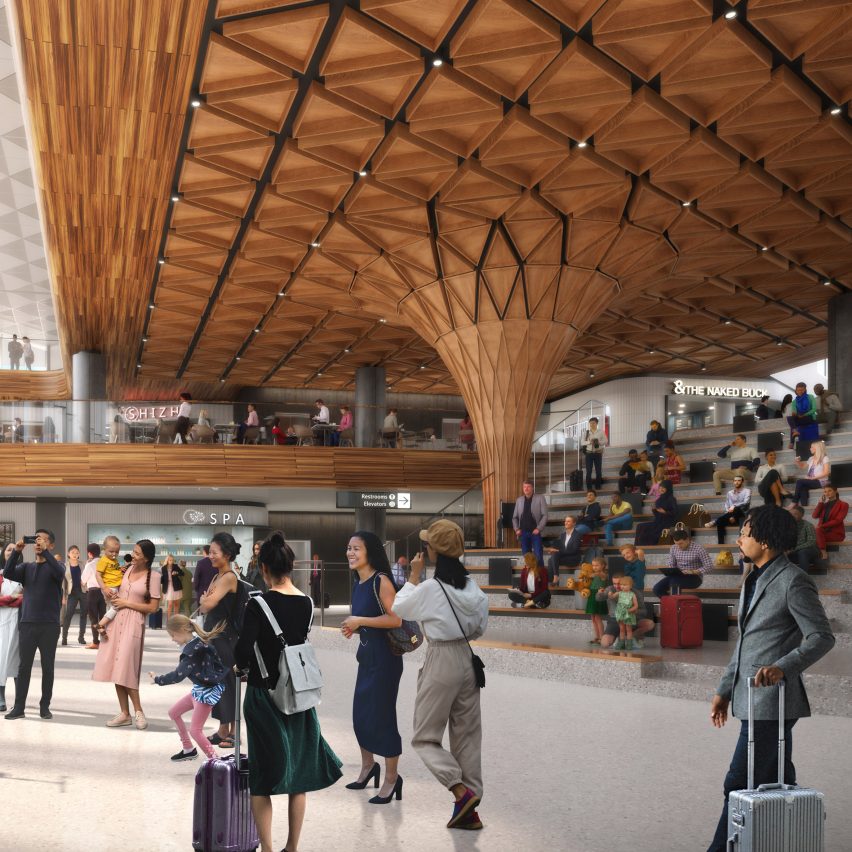
Seattle-Tacoma International Airport, USA, by Miller Hull Partnership and Woods Bagot
A grand central staircase and sculptural pillar clad in locally sourced Douglas fir will be the focal point of the Miller Hull Partnership and Woods Bagot’s 13,520-square-metre expansion of Seattle-Tacoma International Airport, as part of the city’s Sustainable Project Framework.
The two architecture firms claim the expansion, expected to complete in 2027, will have embodied carbon reduction strategies and biophilic design principles at its heart, with photovoltaic rooftop panels, electrochromic window glazing and non-fossil-fuel heating systems among the emissions-limiting measures.
Find out more about the Seattle-Tacoma International Airport expansion ›
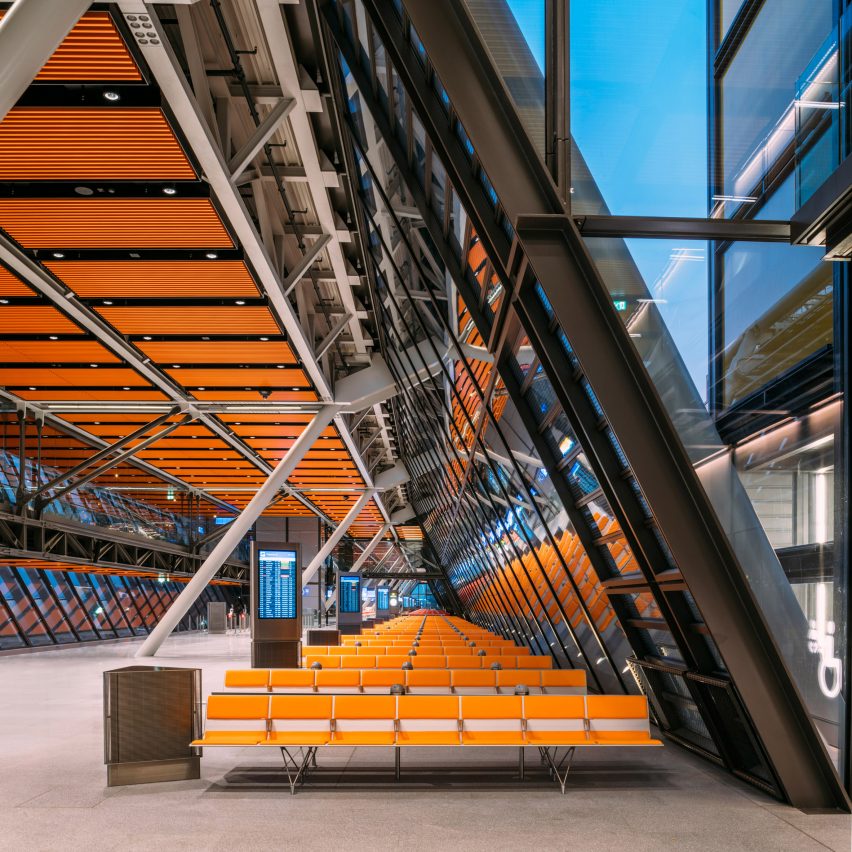
Aile Est at La Genève Internationale, Switzerland, by RBI-T
The recently completed Aile Est terminal, designed by a consortium including British architecture studio RSHP to replace an outdated 1970s facility, is intended to produce more energy than it consumes by using on-site renewable sources such as geothermal piles.
Its exposed modular structure reduced waste during construction and means the building can be easily disassembled, recycled or extended in the future.
Find out more about Aile Est ›
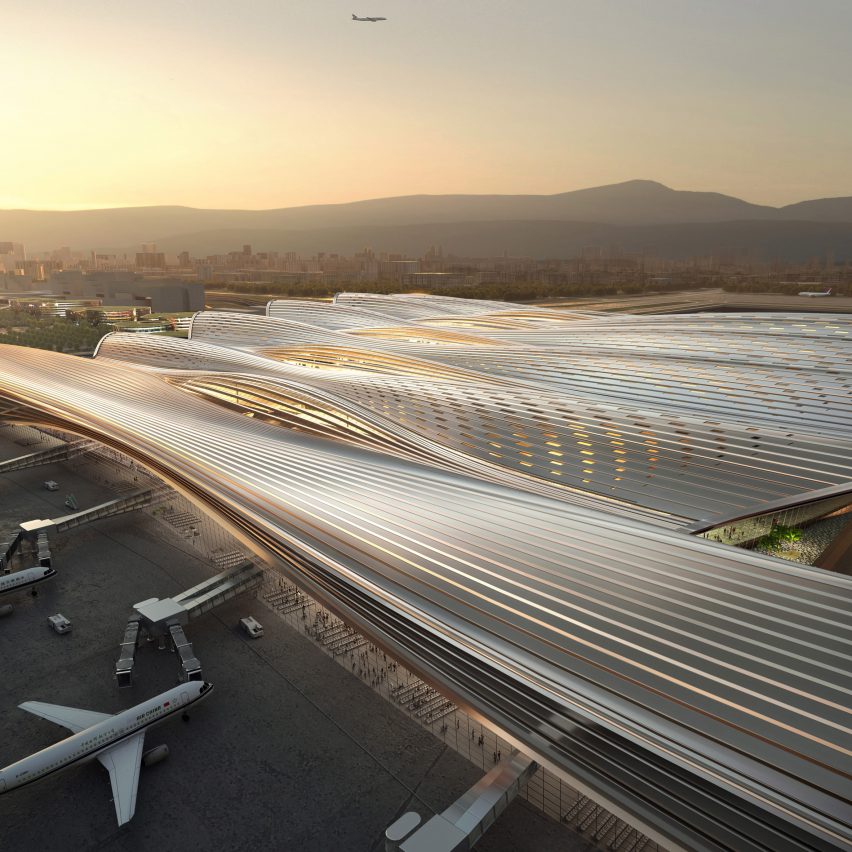
Shenzhen Bao’an International Airport, China, by RSHP
RSHP has also designed a terminal for an airport in Shenzhen that it said will seek to meet sustainability goals through a compact form, control of solar gain, low water use, and the harvesting of rainwater.
It will include vast green spaces, including a central 10,000-square-metre covered garden that can be enjoyed by the 31 million people expected to travel through the facility each year.
Find out more about the Shenzhen Bao’an International Airport extension ›
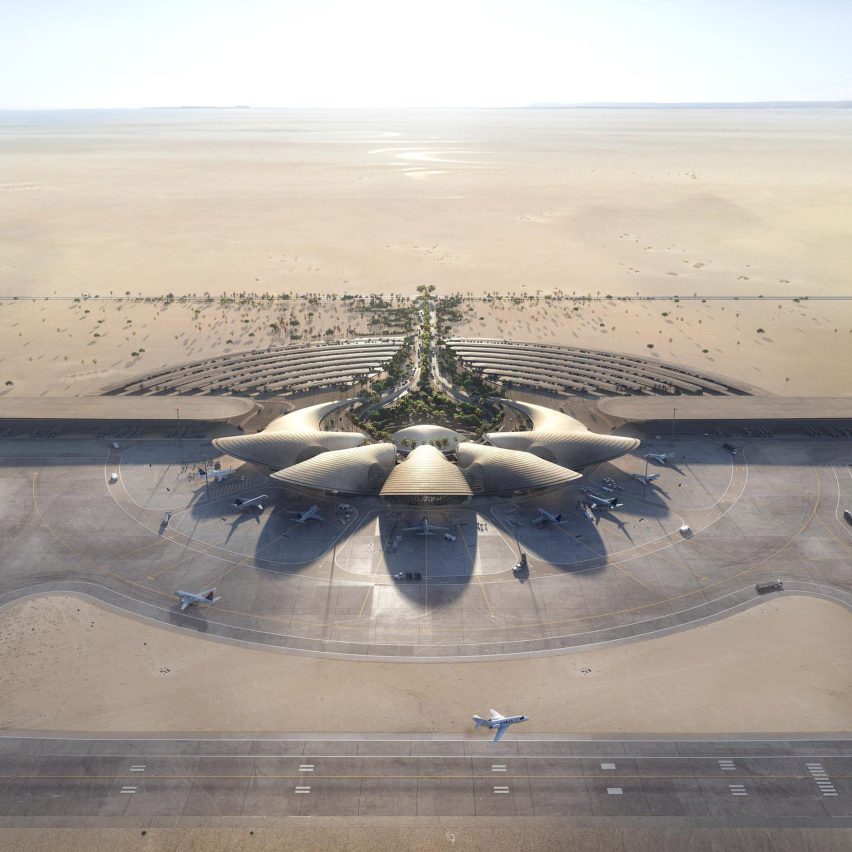
Red Sea International Airport, Saudi Arabia, by Foster + Partners
Foster + Partners is aiming for this airport, under construction in the Saudi desert to serve the huge Red Sea Project tourist development, to achieve a LEED Platinum sustainability rating and be powered by 100 per cent renewable energy.
The studio said the airport’s layout as a series of five dune-like pods around a central volume will reduce energy usage by allowing parts of the facility to be shut down during periods of low demand.
Find out more about the Red Sea International Airport ›
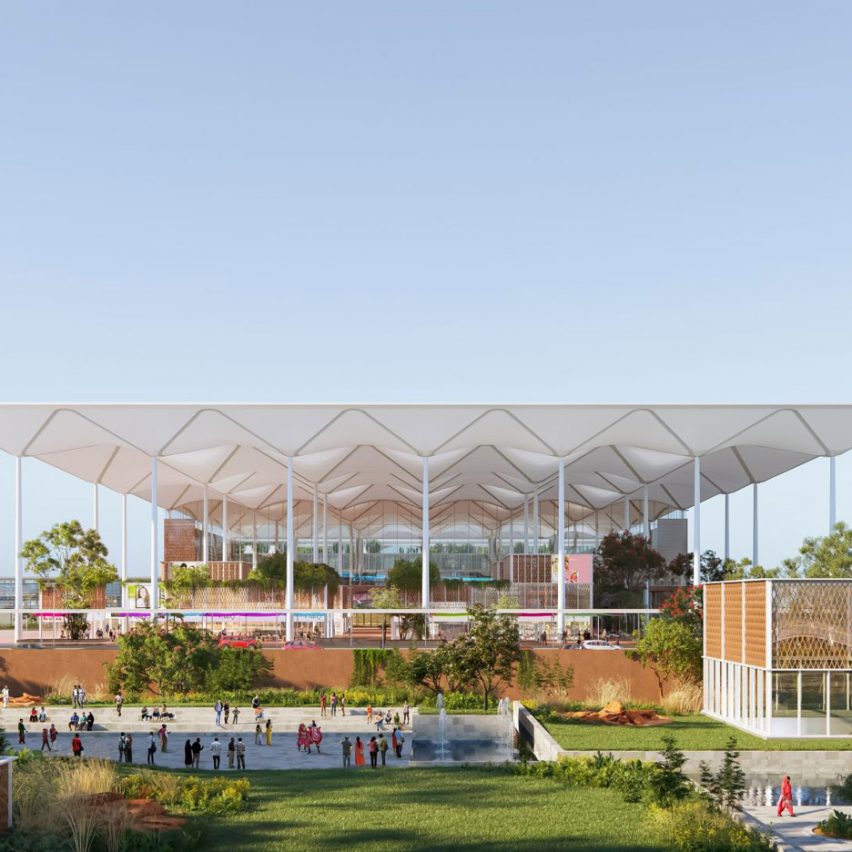
Delhi Noida International Airport, India, by Nordic Office of Architecture, Grimshaw and Haptic
The under-construction terminal at Delhi Noida International Airport has been billed as “India’s greenest airport” by its design team, a collaboration between architecture firms Nordic Office of Architecture, Grimshaw, Haptic and consultants STUP.
The team claims the building itself will be carbon-neutral, removing as much carbon dioxide from the atmosphere as it emits, helped by indoor trees and a landscaped interior courtyard.
Find out more about Delhi Noida International Airport ›
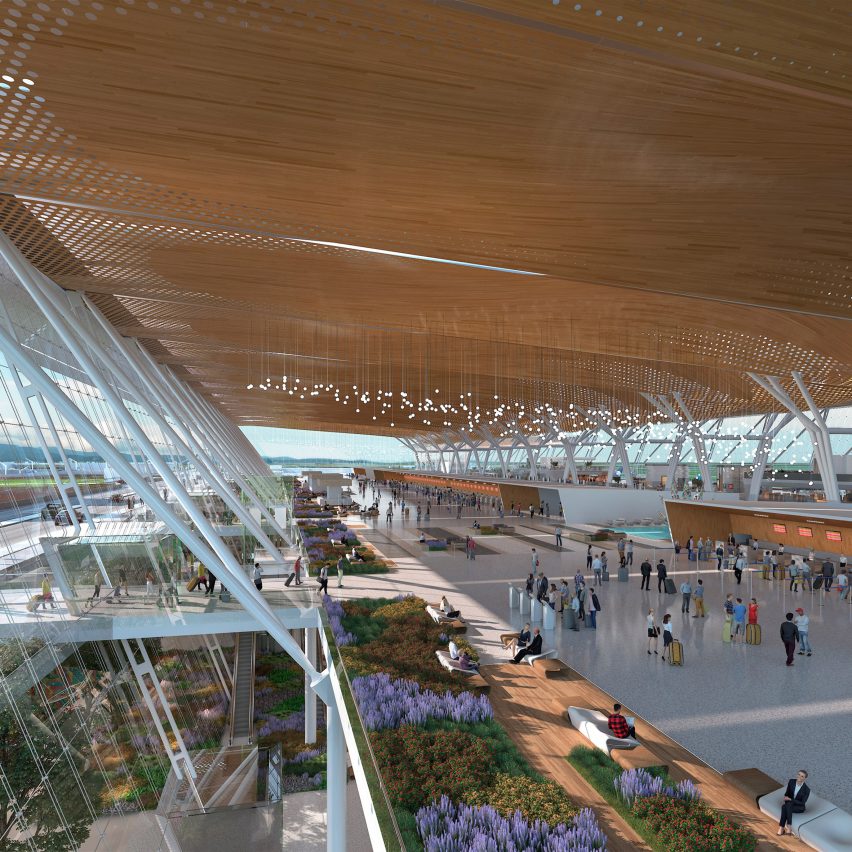
T2 at Guadalajara International Airport, Mexico, by CallisonRTKL
Solar panels, shading and natural light and ventilation offered by a perforated wooden ceiling will combine to dramatically reduce the carbon footprint of a new terminal for the airport in Guadalajara compared to other similar buildings, according to architects CallisonRTKL.
“Multiple environmental strategies reduce energy use by 60 per cent and the carbon footprint of the project by 90 per cent, equivalent to planting 27,300 trees every year,” said the US studio.
Find out more about T2 at Guadalajara International Airport ›
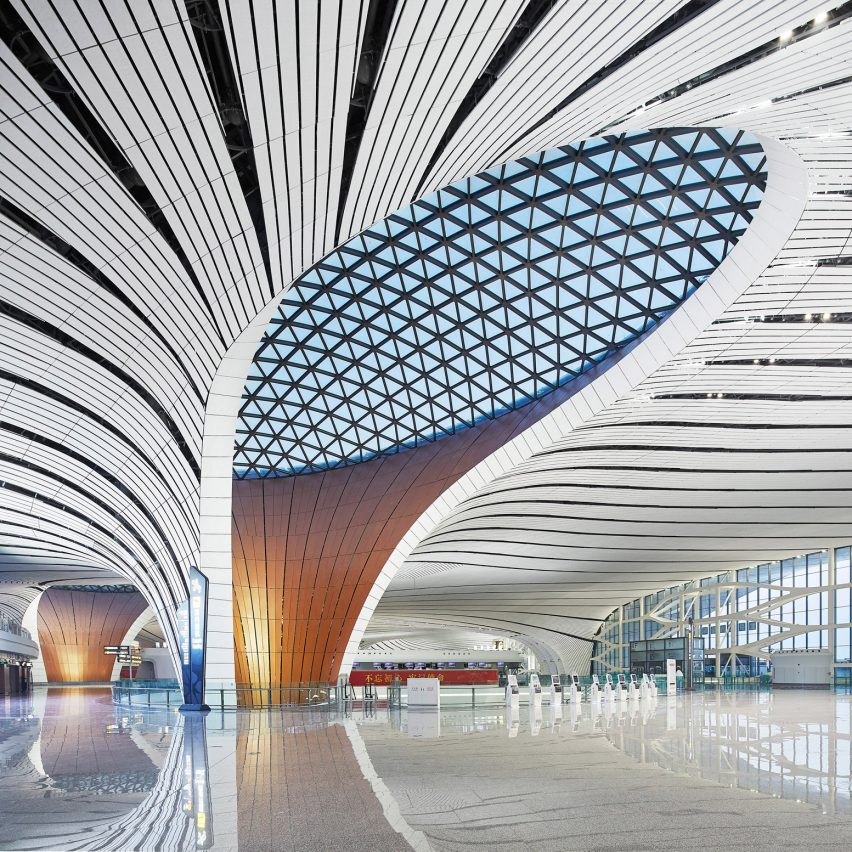
Beijing Daxing International Airport, China, by Zaha Hadid Architects
Completed in 2019, the starfish-shaped Beijing Daxing International Airport designed by the late Zaha Hadid along with specialist firm ADPI is one of the largest in the world at 700,000 square metres.
It is powered by solar panels and recovers waste heat using a ground-source pump, as well as having a rainwater collection system.
Find out more about Beijing Daxing International Airport ›
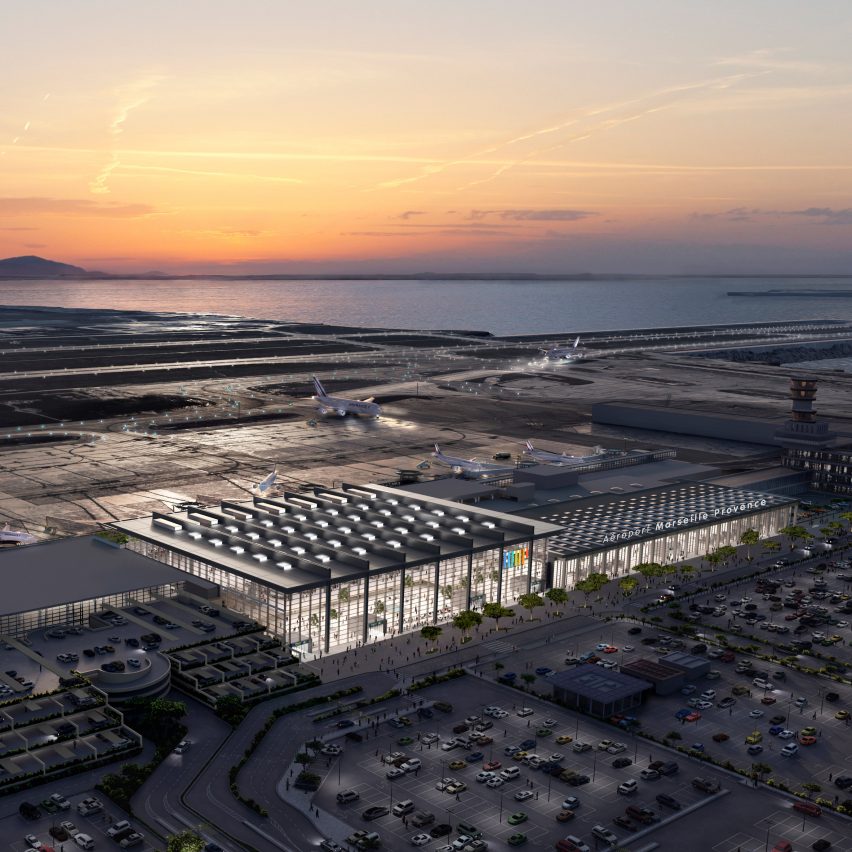
Marseille Provence Airport, France, by Foster + Partners
While still a member of Architects Declare, Foster + Partners was forced to defend the sustainable credentials of its glazed terminal building at Marseille Provence Airport after being challenged by France’s Autorité Environnementale.
“Our sustainable design proposal will exceed the existing French HQE standard to align with the new E+C- standard, ensuring further energy and carbon efficiency,” a spokesperson for Foster + Partners told Dezeen at the time, in reference to the E+C- certification for energy-positive, low carbon building projects introduced after the 2016 Paris Agreement.
Find out more about Marseille Provence Airport ›
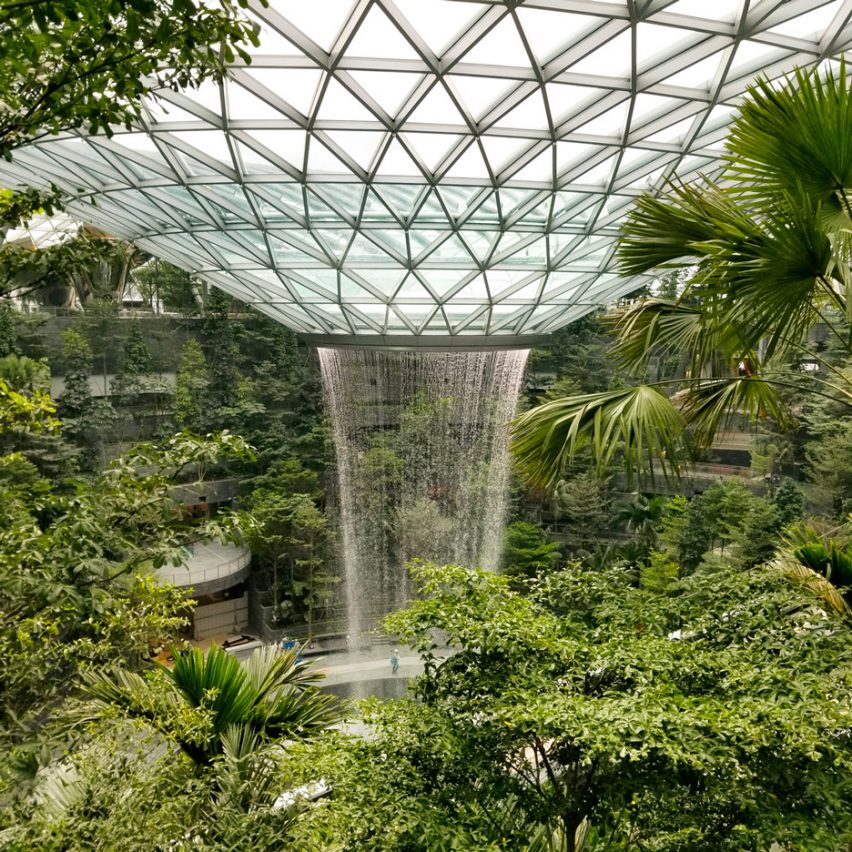
Jewel Changi Airport, Singapore, by Safdie Architects
A vast greenhouse surrounding the world’s tallest indoor waterfall brings unusually large amounts of carbon-sequestering plant life into Jewel Changi Airport, designed by Moshe Safdie’s architecture firm with the help of engineering firm Buro Happold, environmental designers Atelier Ten and Peter Walker and Partners Landscape Architects.
The 40-metre-tall waterfall, called Rain Vortex, funnels rainwater from Singapore’s frequent thunderstorms down seven storeys to naturally cool the air inside the building, with the captured water reused.
Find out more about Jewel Changi Airport ›
Dezeen is on WeChat!
Click here to read the Chinese version of this article on Dezeen’s official WeChat account, where we publish daily architecture and design news and projects in Simplified Chinese.
Our esteemed jury is now reviewing the submissions for this year’s A+Product Awards. Stay tuned for the winner’s announcement later this summer.
We are often introduced to biomaterials regarding their application to support medical advancements. A massive amount of research is being conducted globally, with innovations being announced all the time. You’ve probably heard the word bouncing around the design industry too. However, crucially it must be understood that the two subjects, although identical in name, as products are wildly different. In medical terms, biomaterial refers to a substance engineered to interact with biological systems for a medical purpose (like a heart valve or bone graft). In the design industry, when we discuss biomaterials, we are actually talking about bio-based materials, which are derived and manufactured from living organisms.
Bio-based material is a new and fascinating industry that has come to fruition due to the need for more sustainable construction and manufacturing base materials. Across the world, the quantity of furniture, fabrics and materials that end up in landfill is staggering and arriving there at a rate that cannot be sustained. As a reaction to this, many designers are seeking inspiration from nature and natural life cycles.

Forager Foam by Ecovative Images provided by Ecovative
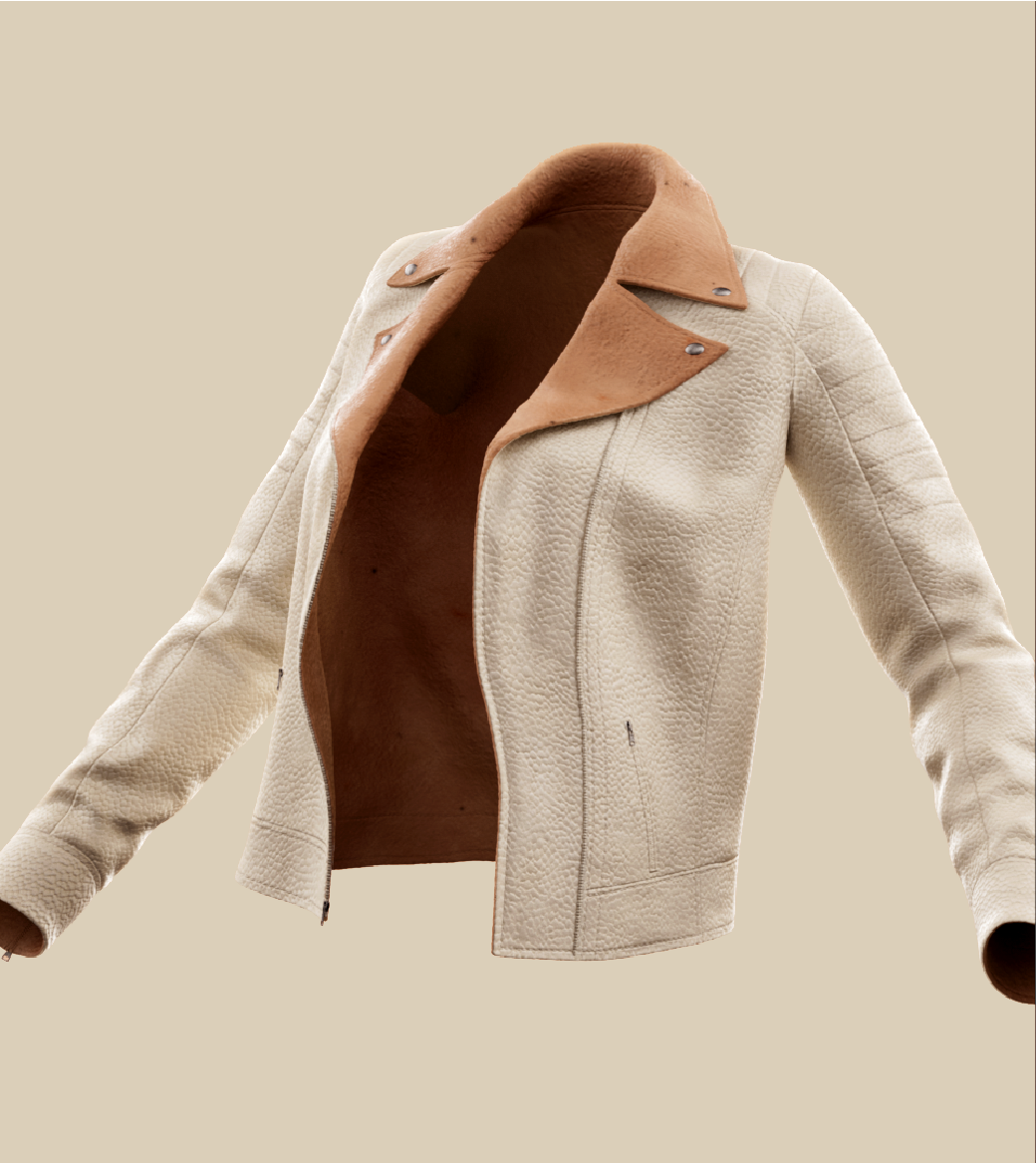
Forager Leather by Ecovative Image by Vasil Hnatiuk
One such company is Ecovative. Ecovative are experts in something called mycelium. Mycelium is an essential part of fungi. It is a web-like substance formed from the pores of fungi. Often residing beneath ground, the probing webs assist in growing the mushrooms we see above ground while interconnecting the fungi from below. The mycelium search for food, passing on nutrients and other information to the fleshy mushrooms above ground. At Ecovative, they have learned how to guide the growth process of the mycelium to create large webs that are almost completely solid. The result is a wide range of natural, biodegradable materials that form textiles, packaging, and even alternative food products.
As a material, mycelium is incredibly resilient, with many other valuable qualities. By studying the growth of mycelium, scientists at Forager Ecovative have drawn out the most useful traits such as tensile strength, waterproofing, fire resistance, pliability and texture. They are producing foams and leather alternatives that rival any on the market. Mycelium hides and foams offer many advantages over traditional leather and plastic materials. Vivid colors and durable, supple textures are possible without the need for caustic chemicals or waste.
Finishing can be achieved with heat, pressure, and bio-based chemicals rather than petroleum-derived coatings, with a wider variety than traditional leather, minus the variability and blemishes that impact price. The foams produced by Ecovative rival any plastic-based alternative in performance and are unmatched in their circularity — mycelium, when thrown away at the end of a product’s life, returns to the earth as a nutrient rather than a pollutant.

Mogu, Mycelium Resilient Floors ©mogu
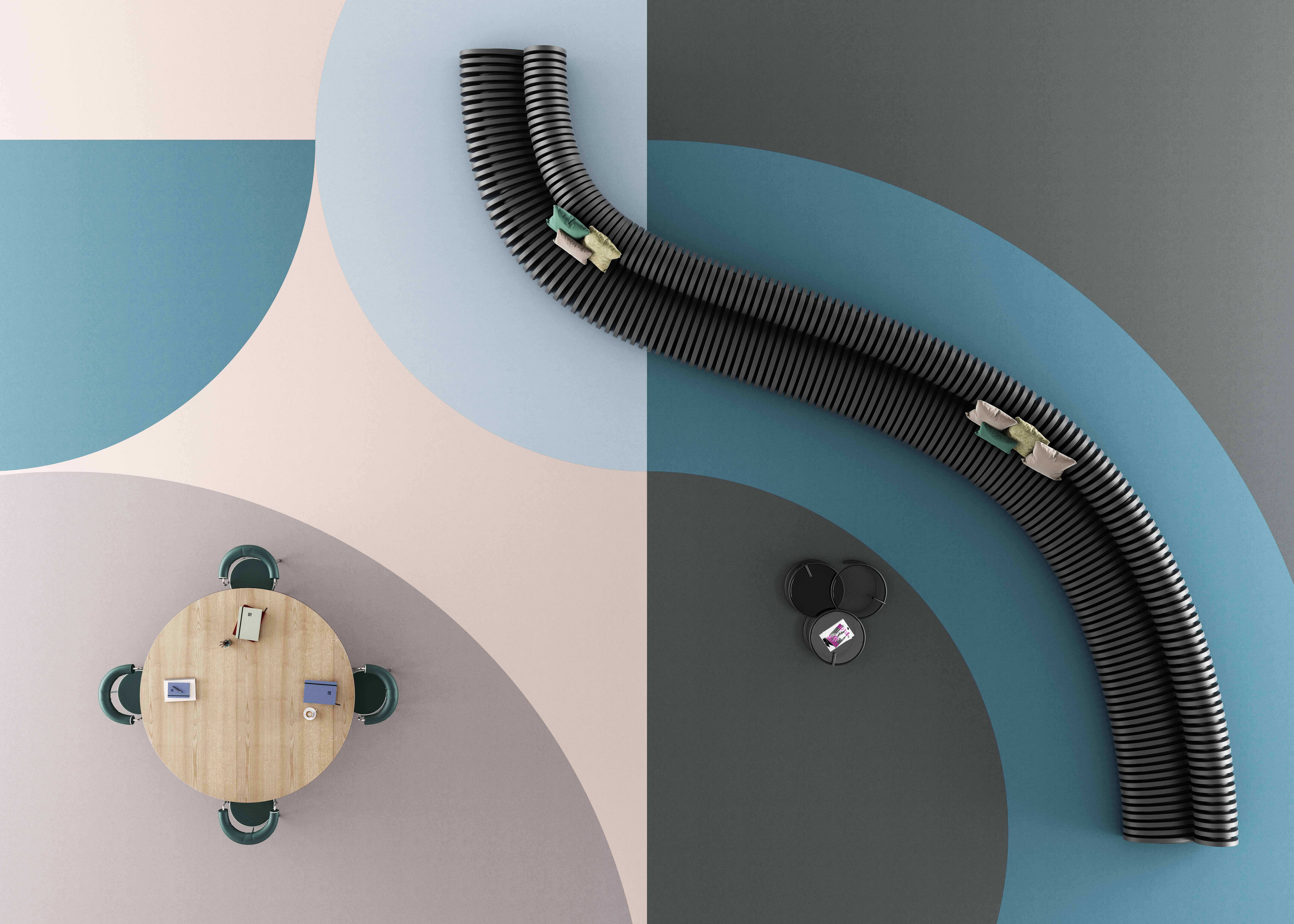
Mogu, Floor Flex ©mogu
Also working tirelessly with mycelium’s exceptional properties and potential are the team at MOGU. Offering functional, beautiful and meaningful products with a durable and sustainable life cycle, MOGU is committed to introducing the world to industrial processes with the lowest possible environmental impact.
“MOGU was founded on the belief that it is possible to employ nature’s intelligence to radically disrupt the design of everyday product, seeking a finer balance between the man-made and the rhythms of the ecosystem.”
MOGU’s floor finishes are genuinely remarkable. The floor finishes are made of solid and stable mycelium-based core boards coupled with high-performance bio-based coating. Each tile or roll integrates low-value biomasses such as corn crops, rice straw, spent coffee grounds, discarded seaweed and clam shells as an alternative to traditional industrial pigments. This choice in toning allows the natural pigments embedded in the product to appear visibly on the surface, creating a unique look to the materials that is elegant, on-trend and subtle.
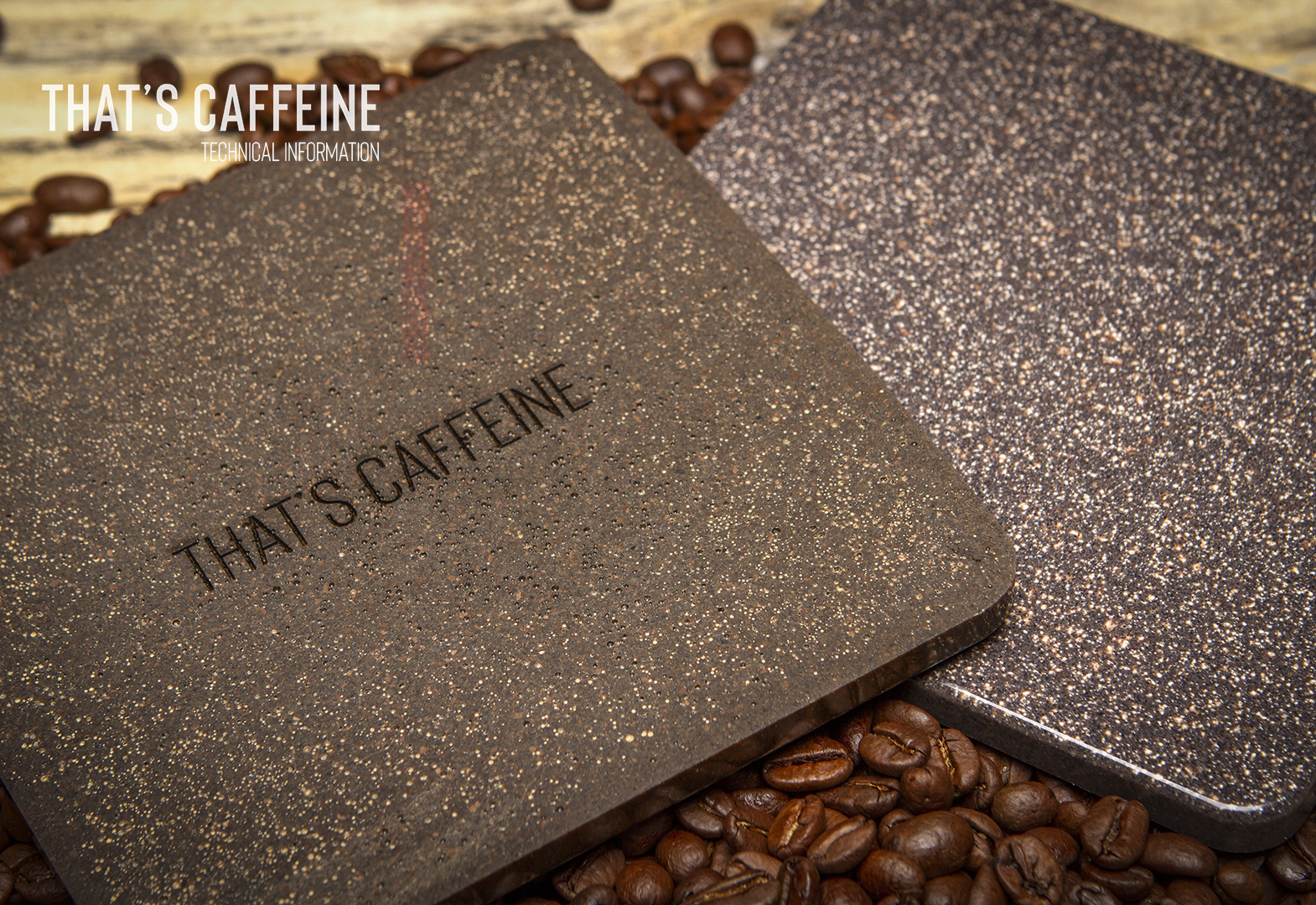
That’s Caffeine by Atticus Durnell
Handmade in London by Atticus Durnell, That’s Caffeine is a unique bio-based material created from recycled coffee grounds that feels and looks like granite stone. The bio-based material is a composite of bio binders, minerals and plant-based resin, making it incredibly lightweight compared to its peers. The material is sustainable and biodegradable, water and heat-resistant, and successfully diverts coffee waste from landfills while enabling its distinctive surface finishes and colors.
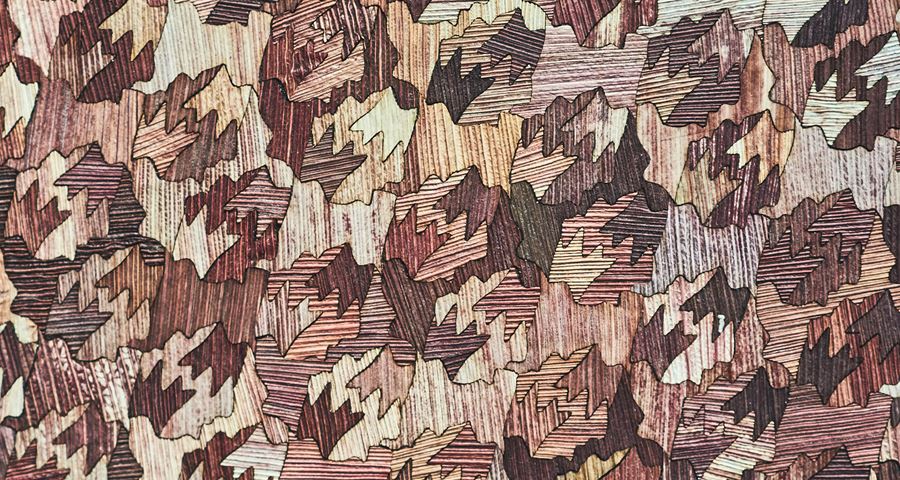
Totomoxle by Fernando Laposse Images by Fernando Laposse
Bio-based materials do not need to be grown into something, as is the case for mycelium-based products. Mexico-based innovator Fernando Laposse has shown how waste material from our other consumables can also be utilized in making new, beautiful materials.
Totomoxtle is a new veneer material made with husks of heirloom Mexican corn. Ranging from deep purples to soft creams, Totomoxtle showcases the wealth of diversity of the native corns of Mexico.
Unfortunately, the number of native varieties of Mexican corn are in sharp decline. International trade agreements, aggressive use of herbicides and pesticides, and the influx of highly modified foreign seeds have decimated the practice. At the moment, the only hope for saving the heirloom species of maize lies with the indigenous people who continue to plant them out of tradition rather than for financial gain.
Laposse has been working with a group of families from the community of Tonahuixtla, slowly reintroducing native seeds in the village and returning to traditional agriculture. The husks collected from the harvest are now transformed by a group of local women into the veneering material, thus creating much-needed local employment and beautiful saleable materials that are forgiving to the environment.
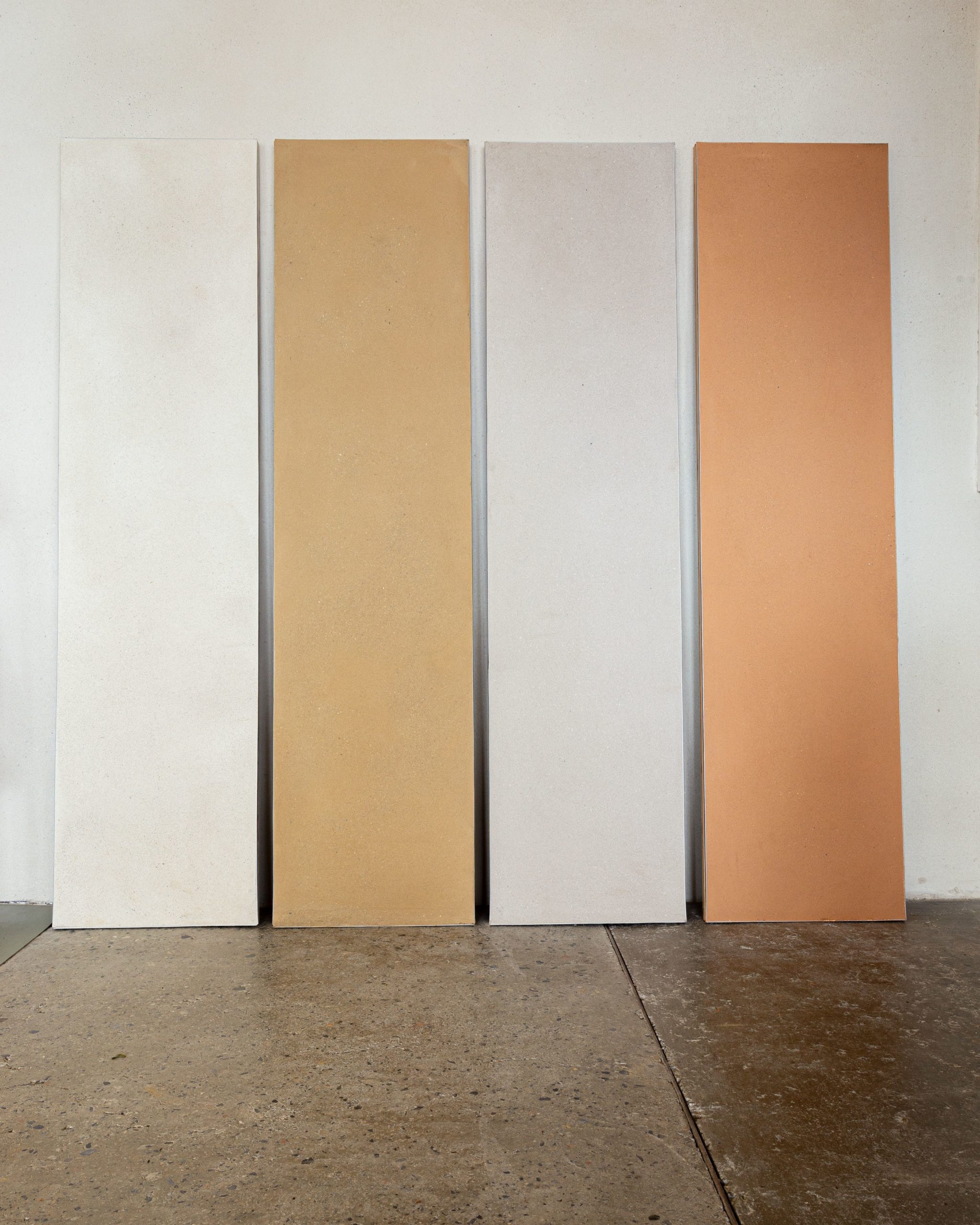
Brusseleir, Clay Plaster by BC Materials Image by BC Materials
BC Materials work on several bio-based products made for the construction industry from the construction industry’s waste. Using material taken from the ground during excavation, the Brussels-based company has created Brusseleir. This clay plaster alternative regulates the humidity of indoor climates and is also wholly vapor permeable all the while, the plaster alternative is four times more acoustically effective than traditional plaster finishes.
From an environmental perspective, biomaterials are a compelling choice: They are biodegradable and store carbon dioxide, which means they can lower the carbon footprint of a product or a building during its lifetime. These materials can often perform just as well, sometimes better, than less sustainable alternatives. We have barely scratched the surface of the potential of bio-based materials and are in no position to propose bio-based materials everywhere just yet. However, there is an argument that says that is precisely what we should be striving for.
Consider this, across all industries, consumers have changed; buyers no longer need items that last a lifetime, typically trends drive sales, and the majority of people want their surroundings to evolve as they do. In such a society, products manufactured from bio-based materials have a stronger appeal than ever. As their usefulness is met, items can be discarded without concern. Each piece naturally breaks down and returns to the earth while leaving space for something new. No need for landfill, no need for chemicals to break things down, just a product from the earth, going right back into the earth — like a leaf working its way through the seasons year after year. That is the future of bio-based materials; hopefully, with suitable investments, it’s not too far off.
Our esteemed jury is now reviewing the submissions for this year’s A+Product Awards. Stay tuned for the winner’s announcement later this summer.
By Joe Emerson, Founder, The Zero Energy Project
Brooklyn-based BlocPower is an innovative for-profit startup that aims to renovate thousands of older buildings to become highly energy efficient, all-electric, and low–carbon emitting. All while creating good jobs for low-income people. As a “public benefit” corporation, BlocPower’s core goals include energy efficiency, renewable energy, greenhouse gas reduction, economic development, job creation in low-income communities, and financial return for its investors.
BlocPower contracts with building owners, local governments, and utilities to decarbonize residential buildings. They start by making them all-electric, removing all the fossil fuel–powered HVAC, stoves, and water heaters; replacing them with highly efficient heat pump heating and cooling systems, heat pump water heaters, and electric stoves with induction ranges. Wherever possible, they add rooftop solar or purchase renewable power for the buildings.
Using advanced modeling and project-management technology, BlocPower handles the contractors; engineering and design; the equipment, removals and installations; as well as the construction loans. Sure, it’s challenging for building owners and residents to go through this process, but BlocPower does everything they can to make it easier. In addition, they provide the financing needed to pay for the project in a way that saves the owners money, usually from the very first year.
BlocPower reports that owners often save 40–60% on their utility bills after the renovation. So the annual total loan payments for the renovation are often less than the annual energy savings. As a result, even though BlocPower lends the money with interest, the owner pays less each year because of the energy savings.
BlocPower has a contract to electrify every residential building in the city of Ithaca within 4 years. Other cities with climate action plans are negotiating with BlocPower to assist them in decarbonizing. While they help to decarbonize a city, BlocPower hires local, low-income residents to do the work.
As an investor-backed company, BlocPower is growing its financial clout in order to scale up its building energy renovations and lending services to meet building energy efficiency needs nationwide. They systematically take advantage of all available government grants, and they’re developing Silicon Valley and Wall Street investors, as well as crowdfunding. As BlocPower plans to go public and take their operations nationwide, they could have a massive impact on carbon emissions as they move homes and buildings across the country forward on the path to green energy.
BlocPower aims to make it possible for cities to meet their climate goals while creating a profit center for investors; creating healthier residences and workplaces; and lowering energy bills.
A home in Williamsburg with a bathroom that saw its original tin-panelled ceiling restored and intricate 19th-century plasterwork set within a modern apartment feature in this lookbook, which showcases decorative and ornate ceilings.
Mouldings are decorative architectural elements that are used as focal elements in interior spaces, contouring the corners of ceilings and light fixtures in the form of ceiling roses, cornices, architraves and coving.
These elements typically have a highly decorative and ornate finish incorporating seamless patterns, created through reliefs and recesses across their surfaces.
Mouldings and ornate plasterworks are typically associated with the Georgian, Victorian and Edwardian eras and were drawn from classicism and ancient Greek and Egyptian architecture.
The architectural elements were often constructed from plaster and timber, however the 20th century saw people look to alternative materials to obtain more durable and cost-effective finishes.
This is the latest in our lookbook series, which provides visual inspiration from Dezeen’s archive. For more inspiration see previous lookbooks featuring deliberately unfinished interiors, maximalist interiors and homes with walk-in wardrobes.

Stockholm Apartment, Sweden, by Note Design Studio
Swedish design firm Note Design Studio transformed this Stockholm office into a home adding shades of yellow, green and pink across its walls and mouldings and window frames.
Rooms of the home were painted entirely in single colours adding pastel hues to its 19th-century features.
Find out more about Stockholm Apartment ›
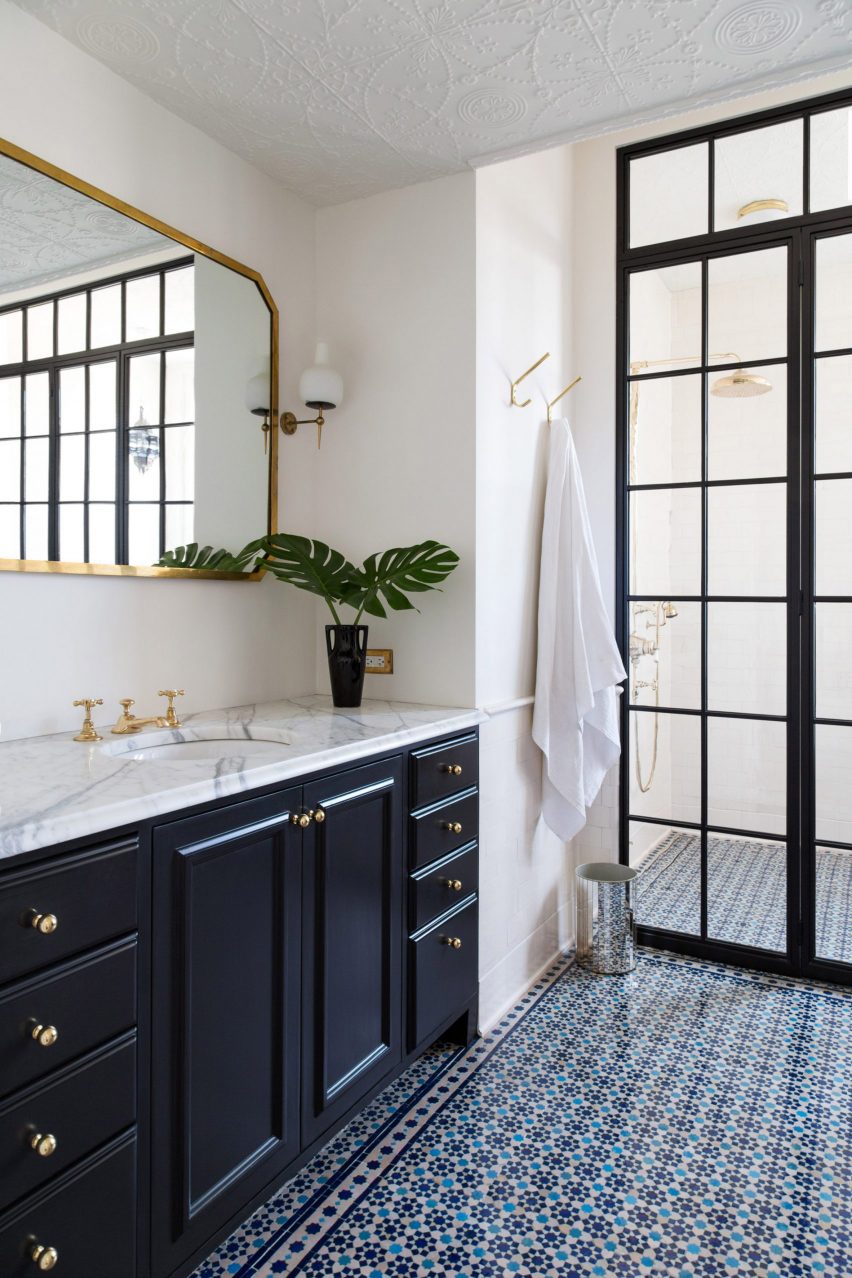
Historic Schoolhouse, US, by White Arrow
Brooklyn-based interior design studio White Arrow’s founders, Keren and Thomas Richter transformed this landmarked building in Williamsburg into a bright and airy home while restoring some of its original features.
In one of the home’s bathrooms, the interior design duo tracked down its original decorative tin ceiling tiles and reinstated them across the vanity area. Tin ceiling tiles are an American innovation and were created as a low-cost and more durable alternative to ornate plasterwork.
Find out more about Historic Schoolhouse ›
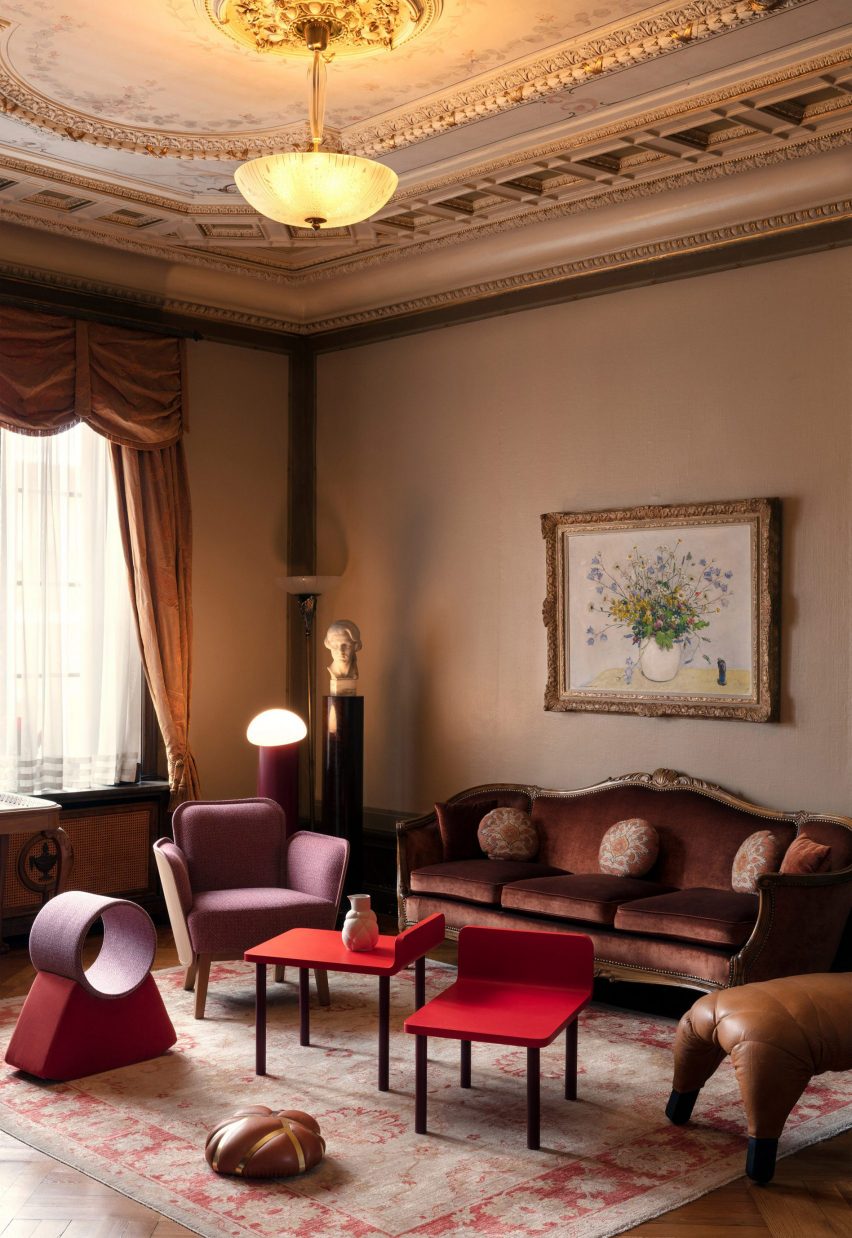
Bakers House, Sweden, by Färg & Blanche
This residence, which has belonged to the family of Färg & Blanche co-founder Emma Marga Blanche for four generations, features a traditional and extravagantly ornate interior. The home formerly contained a traditional Swedish crispbread bakery at the rear of the building and is now mainly used to host events.
Intricately detailed furniture, such as carved-wood trimmed sofas and gilded photo frames complement the home’s decorative ceiling mouldings and ornamentation. In each room, the ceiling details are painted bold colours and incorporate frescoes-like paintings.
Find out more about Bakers House ›

Young family house, Lithuania, by ŠA Atelier
Lithuanian architecture studio ŠA Atelier renovated the interior of this formerly dilapidated 19th-century apartment in Vilnius, Lithuania. Set within a townhouse built in 1862, the apartment has a minimal finish with some of its remaining original features restored as focal points throughout.
Expanses of plasterwork mouldings and ceiling roses stretch across the ceilings in the home while parquet wood flooring boasts a neutral, light tone.
Find out more about Young family house ›
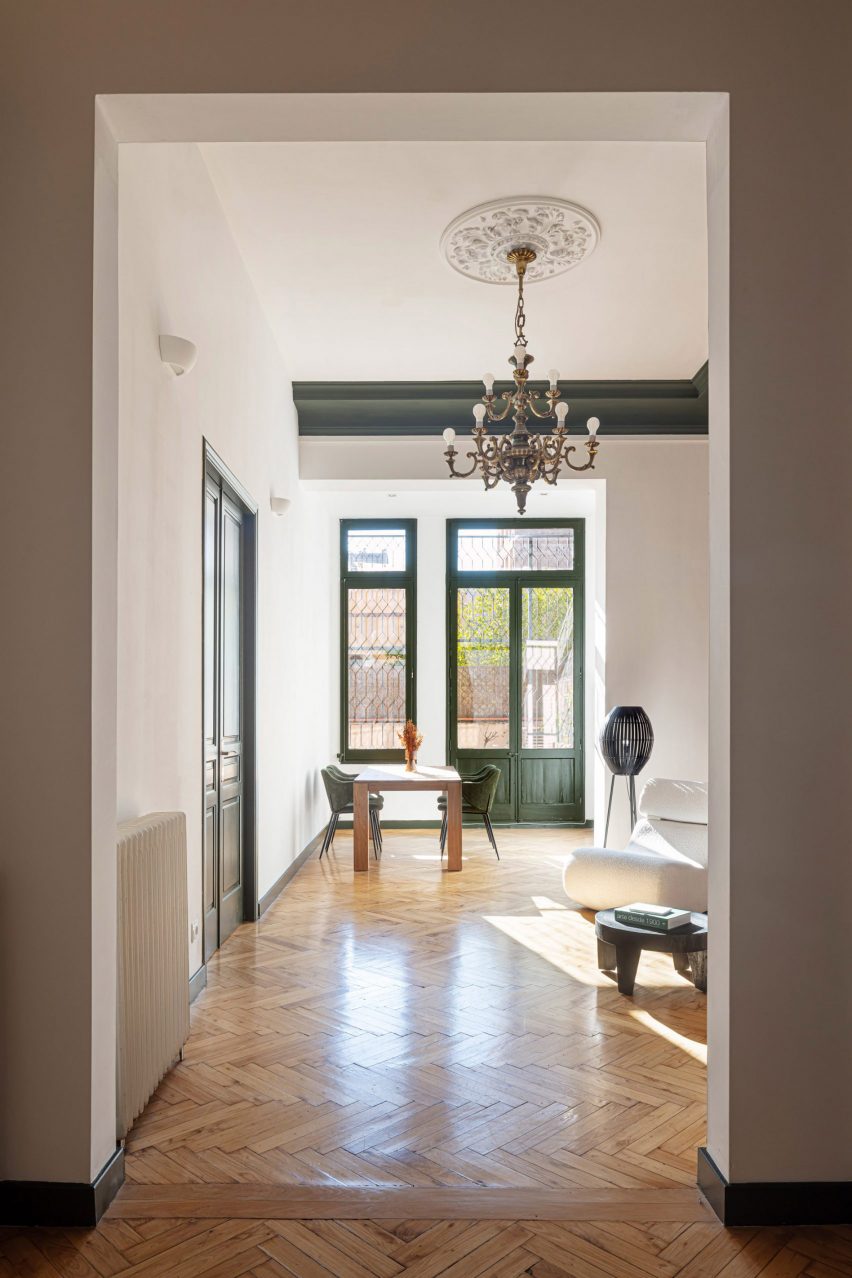
Passeig de Grácia, Spain, by Jeanne Schultz Design Studio
Ornamental details and finishes were added to the renovation of this apartment on Barcelona’s Passeig de Grácia.
US design firm Jeanne Schultz Design Studio incorporated and re-energised the home’s period and original features. In the main living space, it painted the ceiling’s stepped coving, that runs through the interior of the home, a shade of green which was also applied to the doors, window frames and skirting of the room.
Find out more about Passeig de Grácia ›
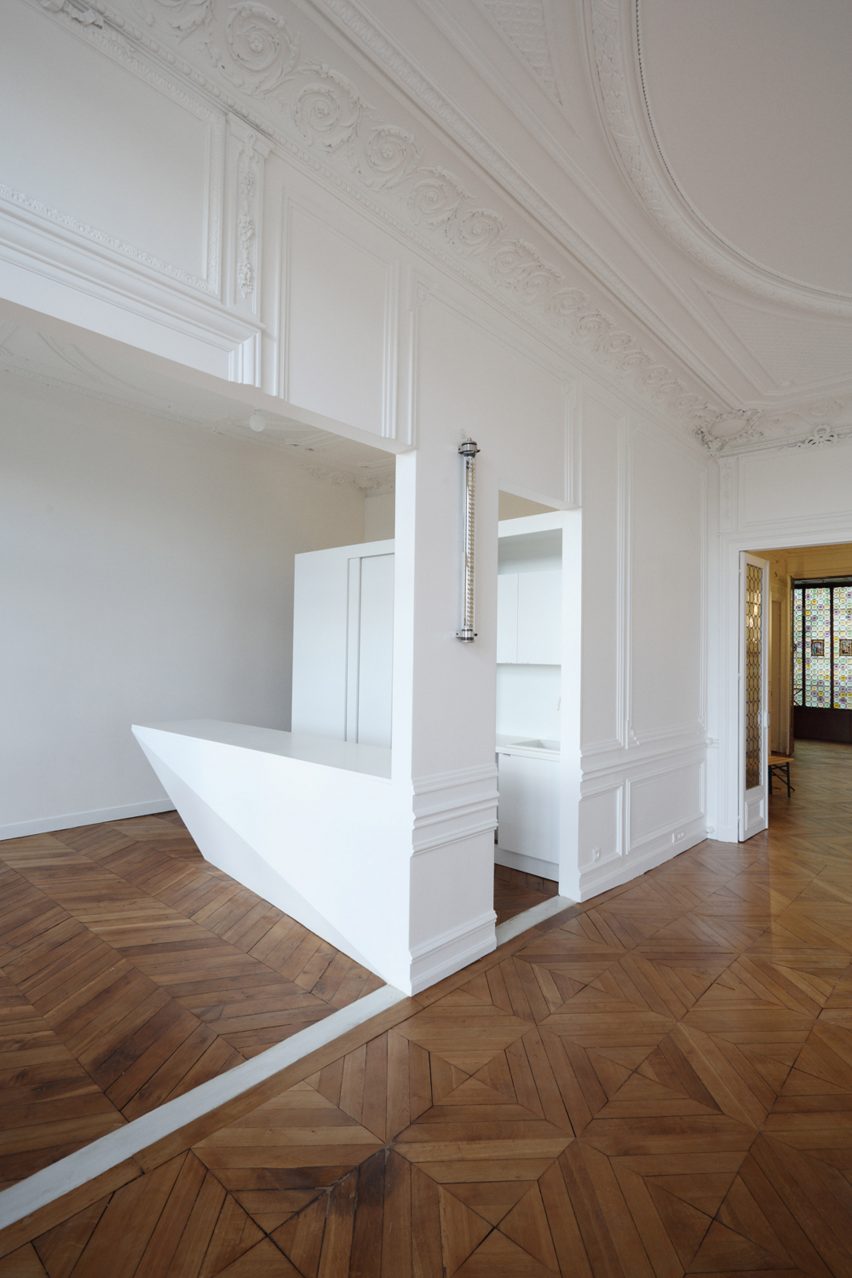
Napoléon apartment, France, Freaks
French studio Freaks renovated this apartment in Paris. It retained period mouldings and architectural features throughout but added modern touches including fluorescent lighting and freestanding angular volumes.
“One of the main interventions consisted of opening the new kitchen towards the dining room, while taking charge to use a contemporary architectural language,” said the studio.
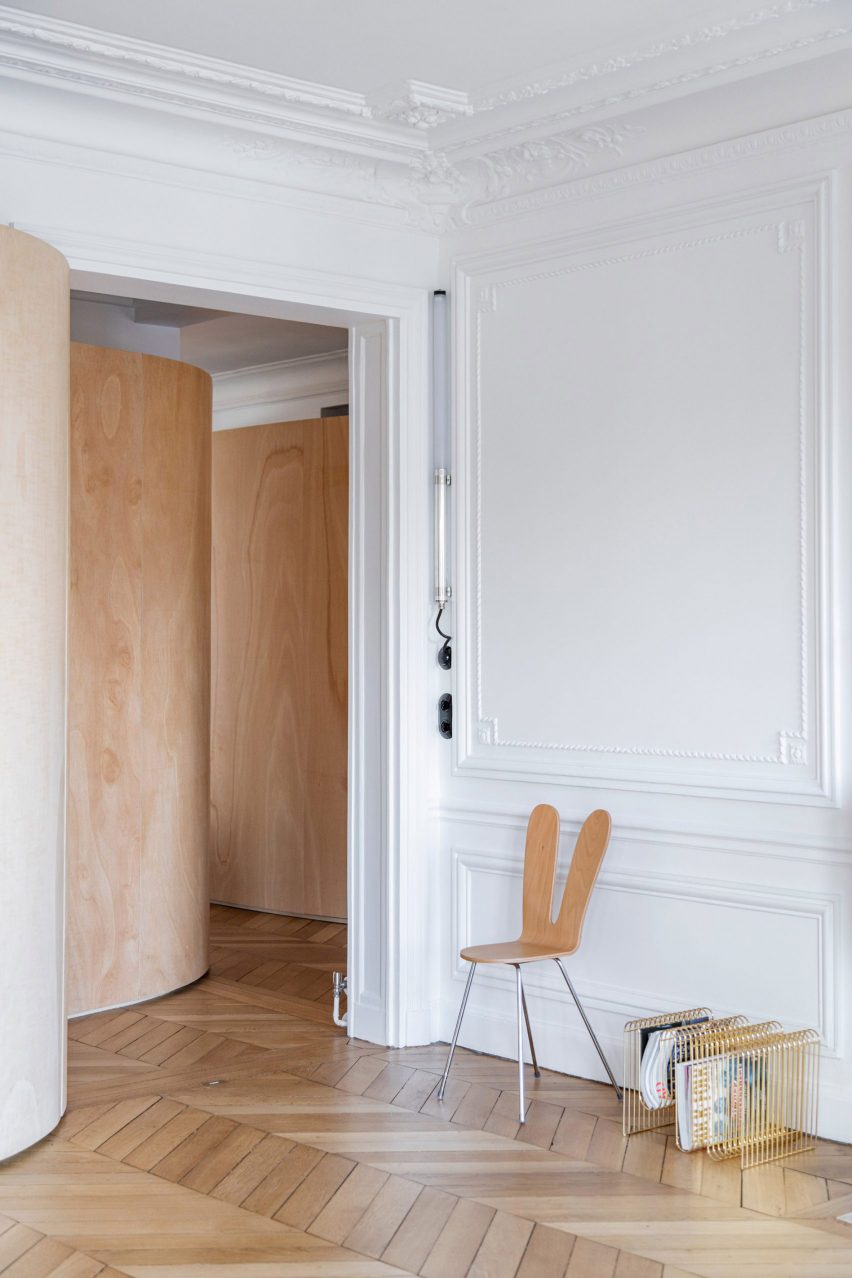
Wood Ribbon apartment, France, by Toledano + Architects
Set above a ribbon-like plywood wall and contrasting against the apartment’s contemporary decor, ornate plasterwork, which has largely remained untouched since the 19th century, subtly defines and zones this apartment.
Where French architecture studio Toledano + Architects wanted the home to feel more contemporary, it installed a false, polycarbonate ceiling over its original decorative ceilings.
Find out more about Wood Ribbon apartment ›
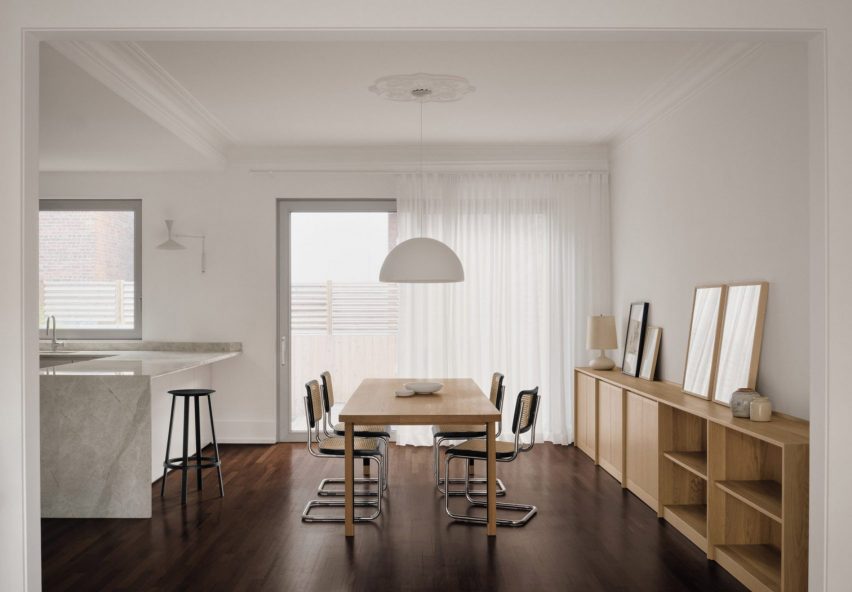
Montreal Home, Canada, by Vives St-Laurent
Canadian interior design studio Vives St-Laurent renovated and remodelled a family home in Montreal to better highlight its existing architectural elements. The studio looked to incorporate as much of the home’s original 20th-century characteristics including its plaster mouldings.
In the home’s open-plan kitchen and diner, coving informally zones the dining room from the kitchen while a ceiling rose anchors a pendant light above a light wood dining table and four Marcel Breuer Cesca chairs.
Find out more about Montreal Home ›
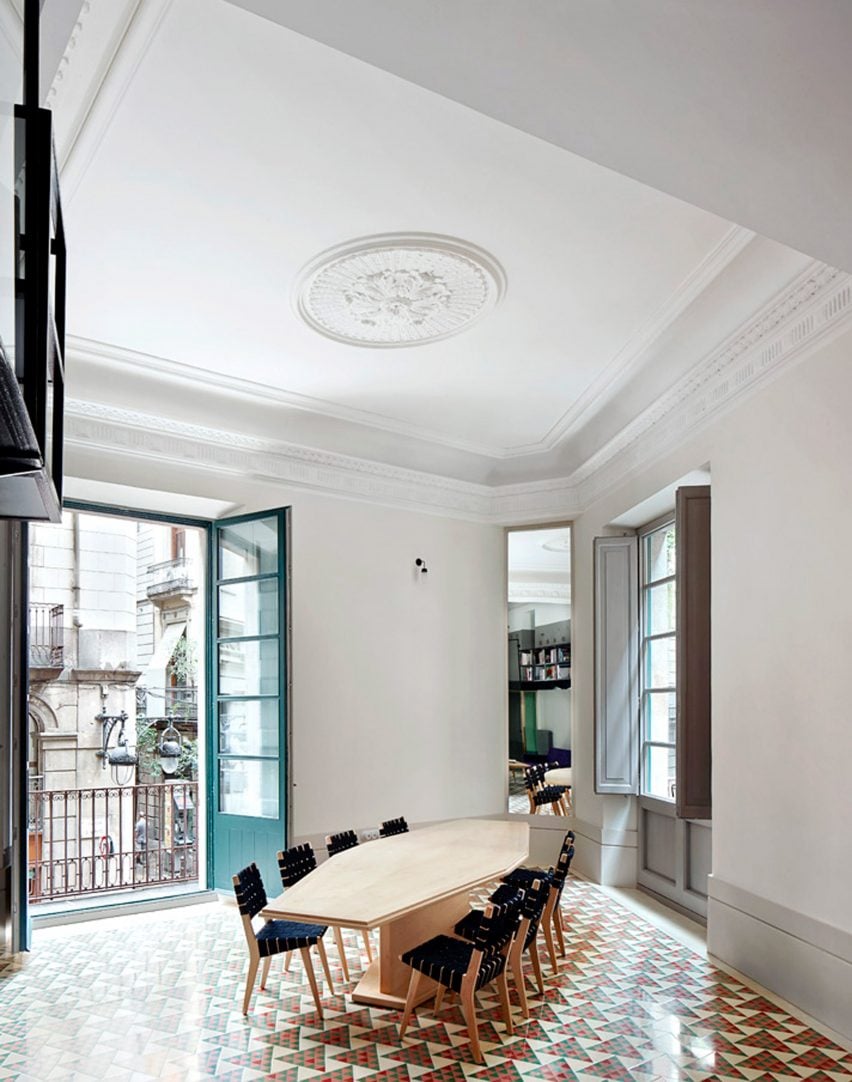
Carrer Avinyo 34, Spain, by David Kohn Architects
British architecture studio David Kohn Architects renovated this Barcelona apartment to better reveal and highlight its large windows, high ceilings and ornate mouldings.
Above the dining space, cornices bound the edges of the room while coffered ceilings stretch across the living areas. Ceiling roses throughout the home became focal points across the ceilings without light fixtures fitted to them.
Find out more about Carrer Avinyo 34 ›
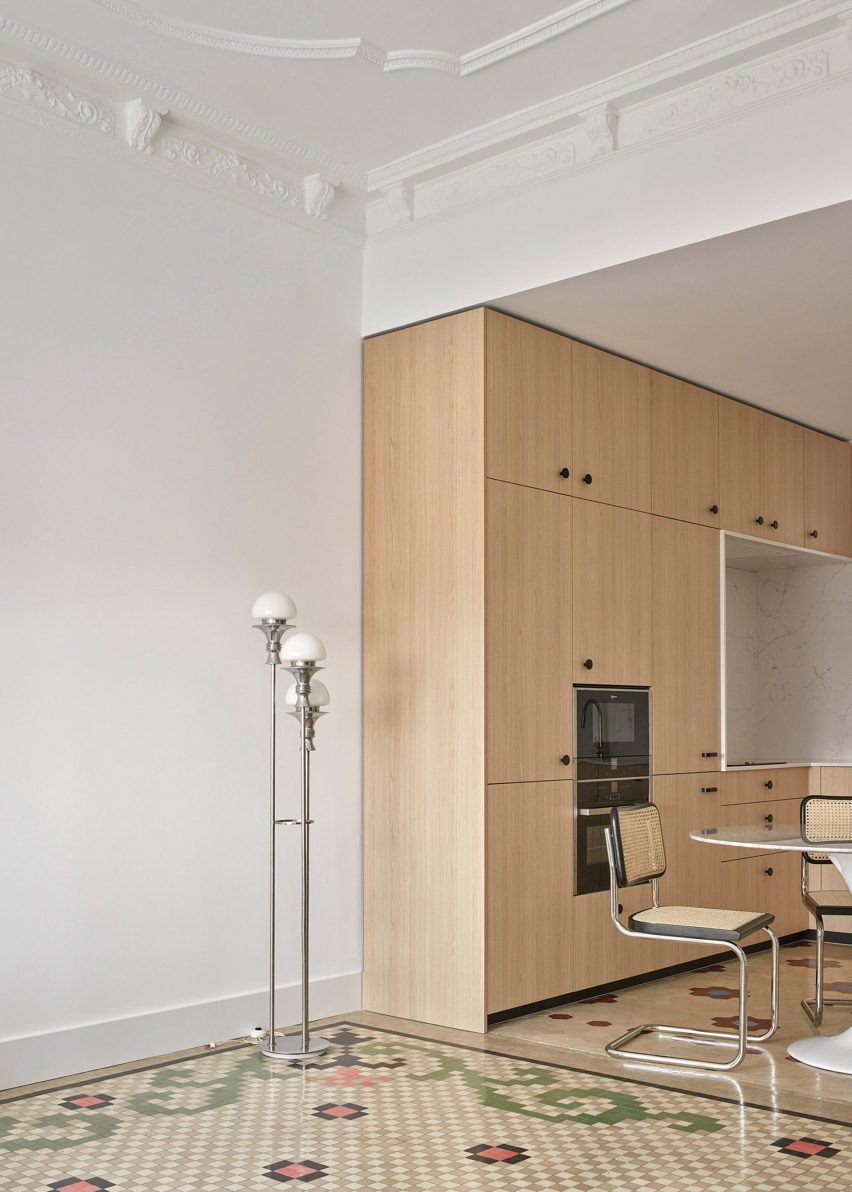
Casa Cas 8, Spain, by DG Arquitecto
Panel moulding and corbels protrude from the ceilings at Casa Cas 8 in Valencia, Spain, which was created by Valencia-based architecture studio DG Arquitecto. The 1920s penthouse aims to celebrate its original features including its mosaic floors, mouldings and arched doorways.
“Small changes in the distribution, very limited by the initial idea of completely maintaining the original floor of the house and the ceilings with mouldings, helped us to transform the existing spaces,” said DG Arquitecto.
Find out more about Casa Cas 8 ›
Find out more about Napoléon apartment ›
This is the latest in our lookbooks series, which provides visual inspiration from Dezeen’s archive. For more inspiration see previous lookbooks featuring deliberately unfinished interiors, maximalist interiors and homes with walk-in wardrobes.

Spotted: Rivers are some of the most idyllic, and valuable, natural environments on earth, and this beauty naturally attracts the attention of tourists. While river tourism bolsters local economies and creates an incentive to preserve natural waterways, traditional fossil fuel tourist vessels create emissions of carbon dioxide and air pollutants. Moreover, gas or oil leaks from motorboats and sailboats with engines can contaminate water. And from the tourists’ own point of view, the peace and tranquillity of a river scene is often soured by the noise and vibrations of a chugging engine. But what if there was a way to address these problems?
Croatia has some of the most beautiful rivers and lakes in Europe, and Croatian startup iCat has developed a solar-powered passenger catamaran that enables tourists, and others, to enjoy the scenery in a more sustainable way. The 15-metre, 54-passenger vessel—called the solarCat—comes with an integrated solar power station that allows it to run on its own self-generated energy. Not only does this lead to zero emissions, it also significantly reduces the amount of noise the catamaran generates. In fact, iCat claims that “the only noise and vibrations will come from the wind and waves.”
The vessel’s modular deck can be adapted to various needs in just 30 minutes – from educational events, concerts, and VIP parties to simple passenger transport. The catamaran’s wheelhouse is also made of glass and is situated to the right side of the bow. According to the company this creates “a sense of transparency, thus eliminating visual barriers for the passengers.”
The solarCat was first presented on Zagreb’s Lake Jarun two years ago and is already in use in Croatia for tourism purposes.
Springwise has previously spotted several sustainable boating innovations, including an electric boat powered by a single battery, and a Seine riverboat powered by old EV batteries.
Written By: Matthew Hempstead
Following a record-breaking heatwave in the UK and western Europe, with climate change meaning that sweltering temperatures are likely to become more common, Smith Mordak outlines 10 ways to design buildings that remain cool in hot weather.
Want to design cool architecture? Of course you do! Follow these principles and you too can be a cool designer of cool spaces that don’t heat up our climate – not cool.
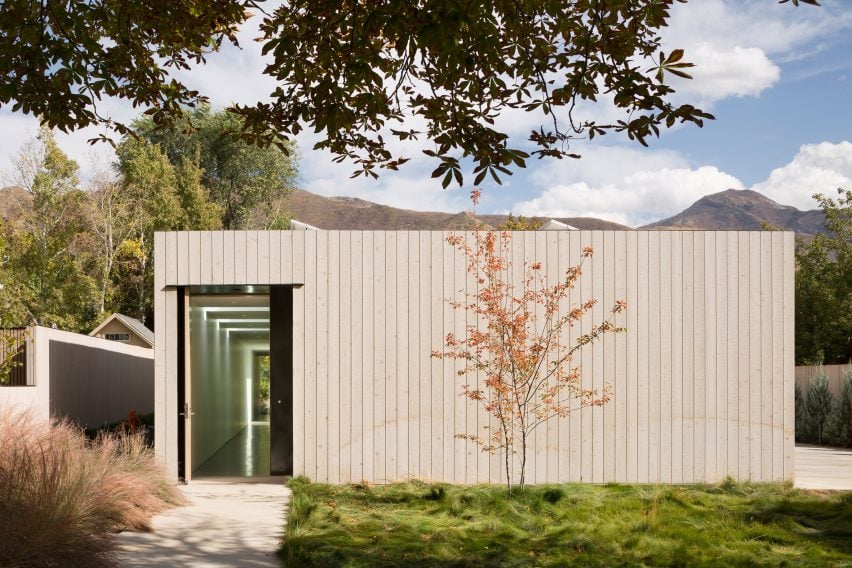
Ground-source heat pumps and low-lying buildings
Low-lying buildings stay cooler than tall skinny ones because the ground maintains a pretty even temperature. Ground-source heat pumps essentially supercharge this process by facilitating depositing heat in the ground in summer and drawing heat from the ground in winter.
Host House in Salt Lake City (pictured), was designed by architects Kipp Edick and Joe Sadoski to be a net-zero building. It is mostly one-storey and uses a ground-source heat pump as one of its measures for controlling temperatures during the extremes of the Utah summers and winters.
Find out more about Host House ›
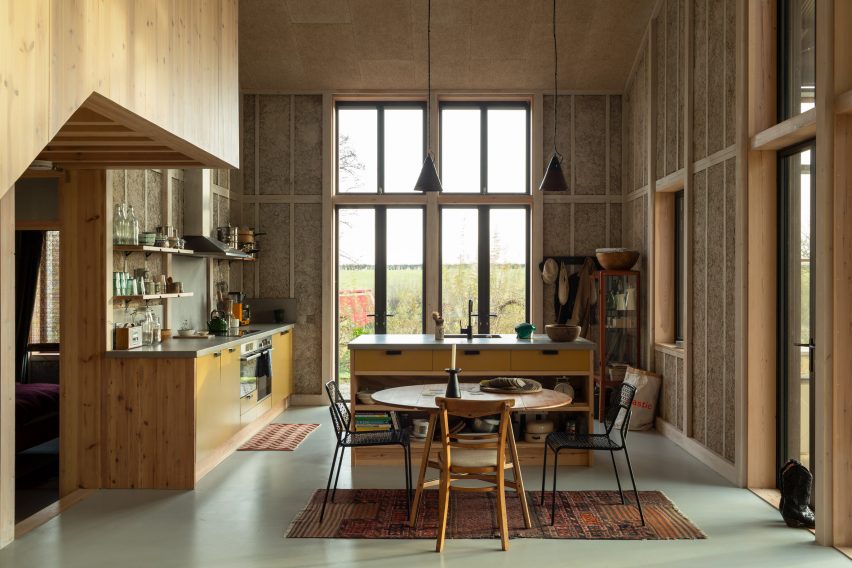
Exposed thermal mass
Internally exposed thermal mass is a mini version of this same concept. Thermally massive materials store heat or coolness, reducing the temperature difference between day and night.
Concrete has been soaring high on the thermal mass scale for far too long. The argument goes that while you’ll emit a load of carbon dioxide making the cement, the energy you’ll save by not having to heat and cool the building as much will make up for it. This is as annoying as those ads for excessively packaged nutrient-free foodstuffs that claim you’ll ‘save’ money buying them because they’re not quite as overpriced as they were yesterday, when you’d be better off not buying them at all. Concrete does not have a monopoly on thermal mass.
Hempcrete – a mix of hemp shiv (the woody stem of the plant) and a lime binder – is a highly insulating material that also provides that much sought-after thermal mass without the huge upfront carbon cost. It’s also vapour permeable and absorbs and releases moisture depending on its environment, so it controls humidity. Other low-carbon thermally massive materials include stone, rammed earth, and unfired bricks.
Flat House in Cambridgeshire (pictured), is a zero-carbon house designed by Practice Architecture that makes extensive use of hempcrete inside and out, especially on the exposed interior walls.
Find out more about Flat House ›
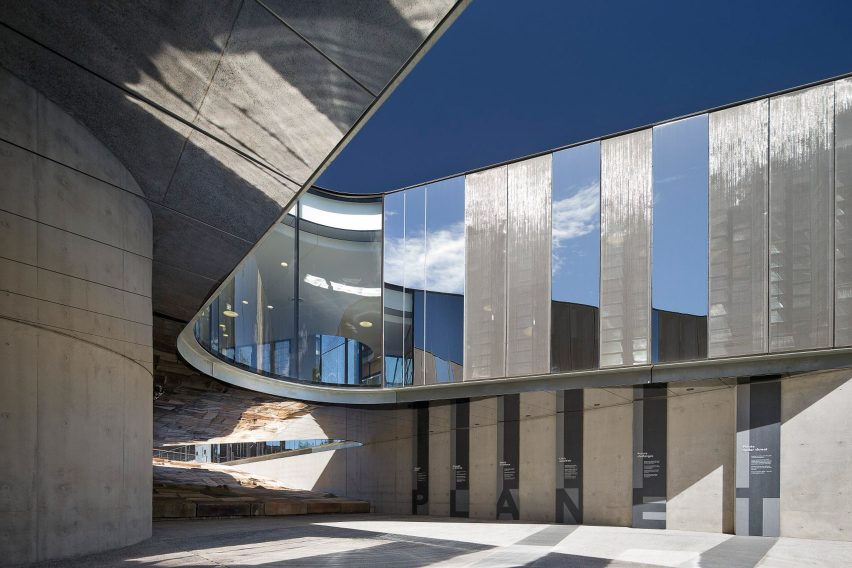
Air cooling
If you create a labyrinth of thermal mass in your basement then not only do you get to say “want to see my labyrinth?” when people come to visit, you also have a no-need-to-plug-in coolness store always at hand. If you slowly pass outside air across the cool walls and of your cool underground maze before bringing it into inhabited spaces, then you’ve supercooled your passive ventilation without any chillers.
The Australian Plant Bank in New South Wales (pictured) uses an underground thermal labyrinth to capture and retain the heat of the day or the cool of the night, preventing sharp temperature fluctuations and warming or cooling the building by up to 7.5 degrees centigrade. It was designed by BVN Donovan Hill.
Find out more about the Australian Plant Bank ›
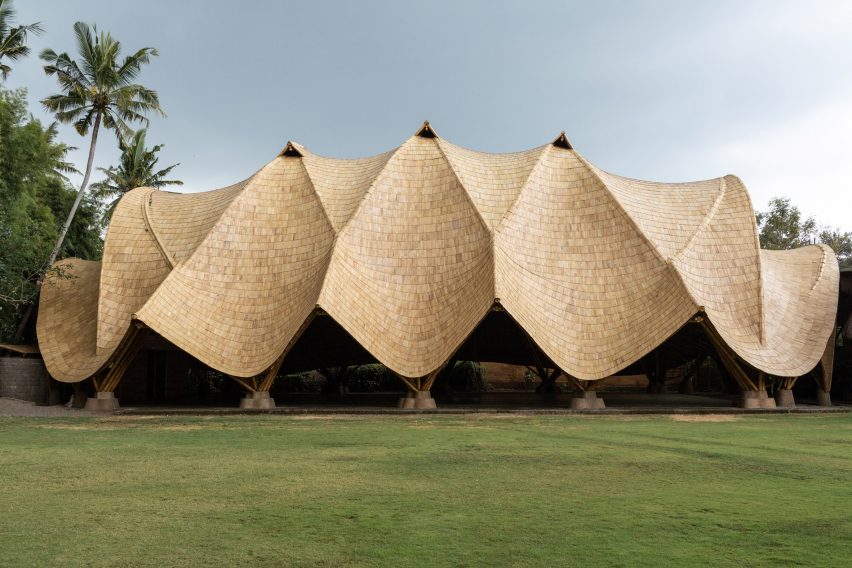
Heat extraction
As well as bringing in the cold we need to get rid of the heat. Even if you unplug everything, people still generate heat that needs removing, especially if there are a lot of people in your building.
Of course, unless your building is in a climate that never gets cold, even at night, this heat extraction needs to be controlled. Heat rises, so tall spaces that allow the heat to collect out of the way, openable windows at a high level that let the hot air out, and chimneys with wind cowls that use the passing wind to draw the air up through the building are all good tactics.
The image shows The Arc gymnasium in Bali designed by Ibuku, which uses vents at the apex of its roof to allow warm air to escape. Find out more about The Arc ›
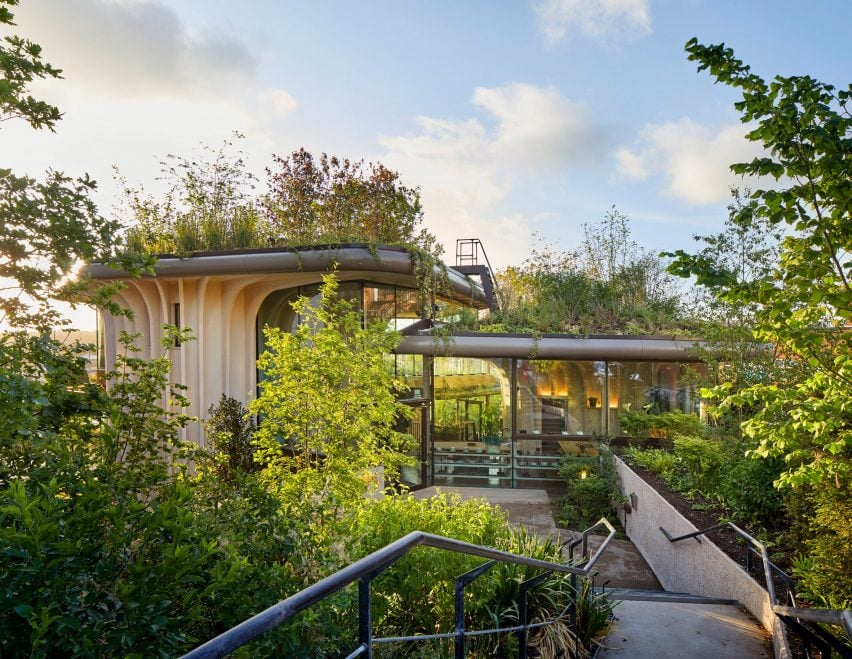
Keeping heat out
To reduce the amount of work the building needs to do to extract the heat or bring in the cold, well-designed buildings keep the heat out. If you don’t have a thermal labyrinth in your basement (yet!) then having a heat exchanger on your air intake/extract means you’re not losing heat in winter or gaining it in summer.
A huge way to prevent the temperature indoors from being a slave to the temperature outdoors is insulation: lovely thick insulation made from biobased, non-polluting materials. Couple this with double or triple glazing and a fat green roof (both insulating and brilliant for biodiversity) and you’re laughing.
The image shows the Maggie’s Centre for cancer patients in Leeds, designed by Heatherwick Studio and built with natural materials. Its roof is covered in plant species native to the woodlands of Yorkshire. Find about more about this Maggie’s Centre ›
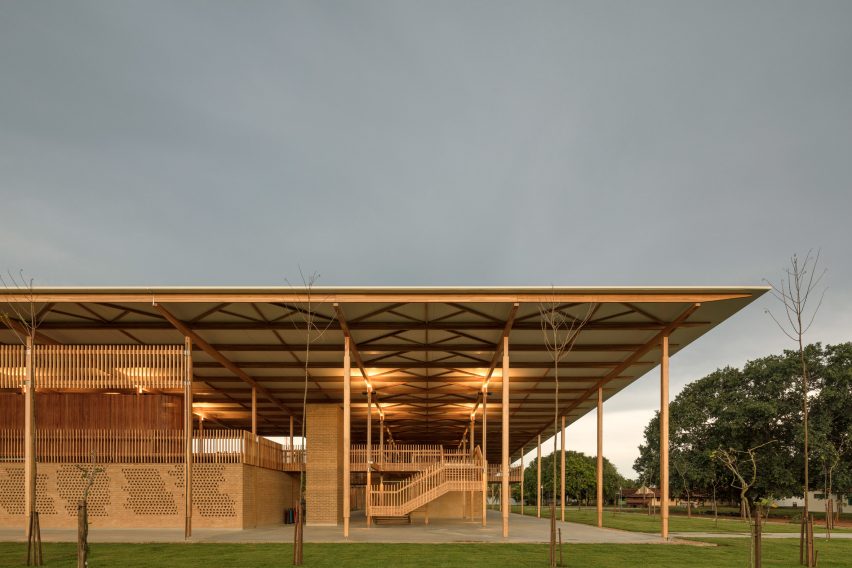
External shading
We’re getting better at insulation, but what we’re still mostly rubbish at as a profession is external shading. This keeps the heat off the building in the first place.
Shading needs to consider orientation. Vertical shading is best for east-and west-facing facades where the sun is lower. Overhangs and horizontal shading are best for the highest sun (from the south in the northern hemisphere and north in the southern hemisphere).
Deciduous trees are also handy, given how they shed their little shading units (aka leaves) in the winter when you appreciate the sun’s warmth. Other dynamic shading options are shutters and awnings that you can move or open and close. The shading is best outside because then the heat never gets indoors, but at a push, internal shading that’s pale – so that it reflects the heat back out – is better than nothing.
Aleph Zero and Rosenbaum designed the Children Village school boarding facility in northern Brazil (pictured) with a large canopy roof framed by cross-laminated timber to shade the building.
Find out more about Children Village ›
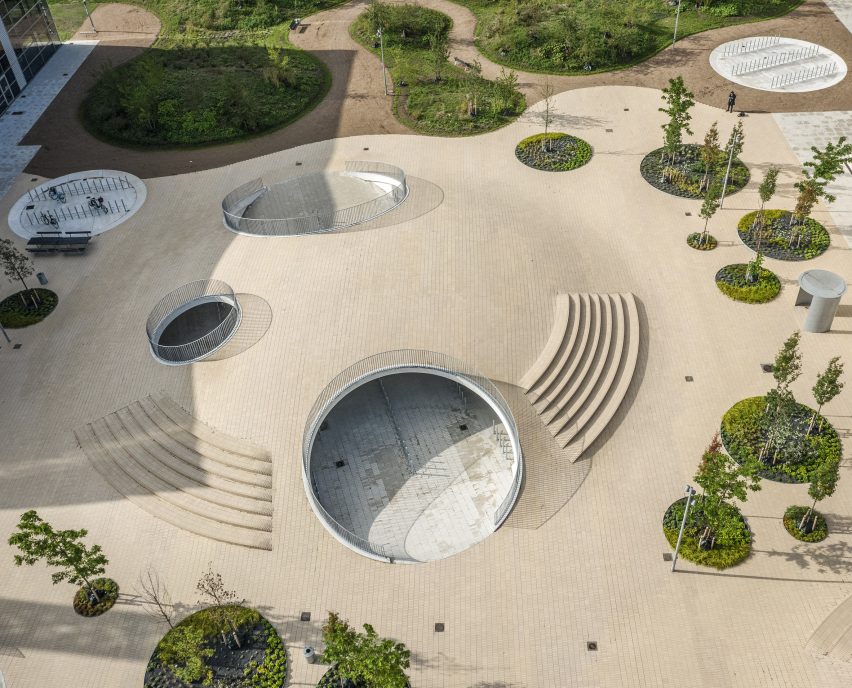
Green urban environments
Designing a cool building is not just about the building, but also about designing a cool environment for your building to be in. The urban heat island effect can increase temperatures in urban areas by more than 10 degrees Celsius compared to their rural neighbours. We desperately need to tackle this if we’re to ease the health impacts of heatwaves and reduce the energy demand of buildings.
This means fewer heat-emitting things in urban spaces, ie fewer cars and fewer air conditioning units pumping out hot exhaust into the streets. It also means not leaving heat batteries lying about in the sun: towns and cities tend to be stock-full of thermal mass in the form of masonry, paving, and tarmac that soak up the heat from the sun and hang on to it tightly. We need less tarmac and more green, and when we retrofit our buildings with external insulation it would be great if this was reducing the amount of masonry cooking in the sunshine.
The Karen Blixens Plads public plaza in Copenhagen (pictured), which was designed by COBE, covers sheltered parking for bicycles and features neutral-coloured tiles frequently interspersed with planting and trees.
Find out more about Karen Blixens Plads ›
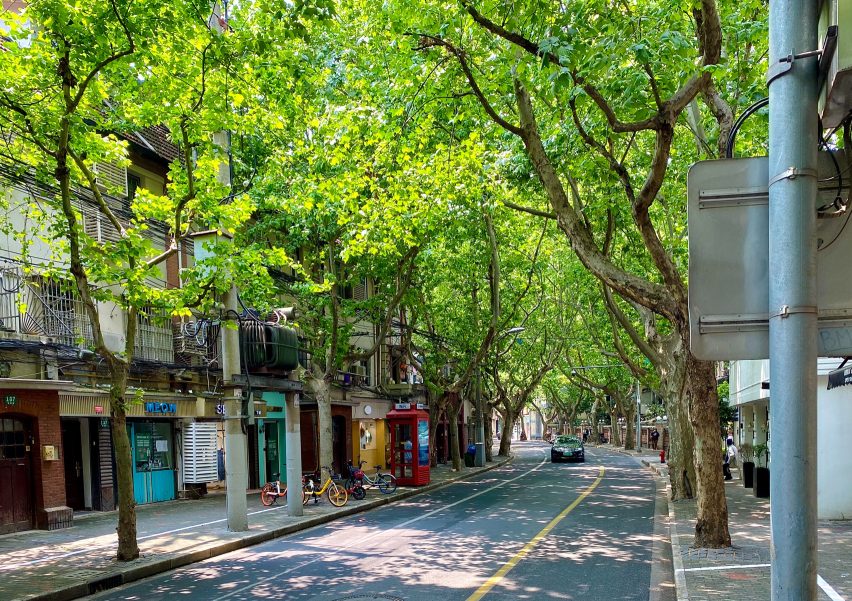
Shaded public realm
Trees are magic. Not only do they provide shade, habitats for a gazillion species, share information and nutrients with each other and other plants through mycelium networks and improve soil health, but they also cool the air around them via evapotranspiration.
This is where the trees use the heat energy in the air to evaporate the water in their leaves. We don’t need to leave this all up to the trees, however: moving water (from waterfalls to misters) has the same effect, as when the water evaporates it leaves the air around it cooler. We can also rip off the trees’ shading technologies: keep the sun off external spaces to prevent those hard, thermally massive materials from cooking us like pizza stones.
The image shows a street in Shanghai.
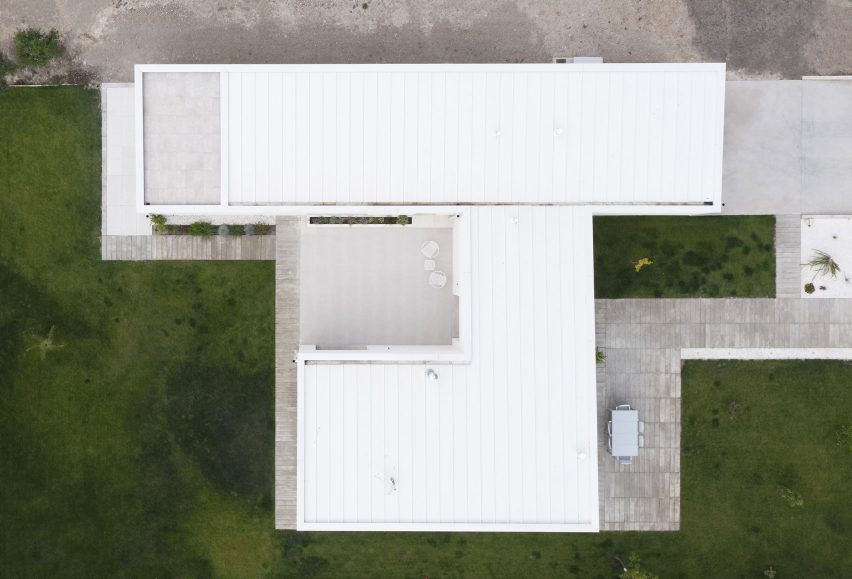
Pale roofs
A final dig at tarmac and its buddy, the bitumen roof, is that they are dark and so they absorb heat. If these surfaces were paler, they could help reflect heat back out of town.
Casa Banlusa (pictured) is a white-roofed villa in Valladolid designed by architecture studio Sara Acebes Anta.
Find out more about Casa Banlusa ›
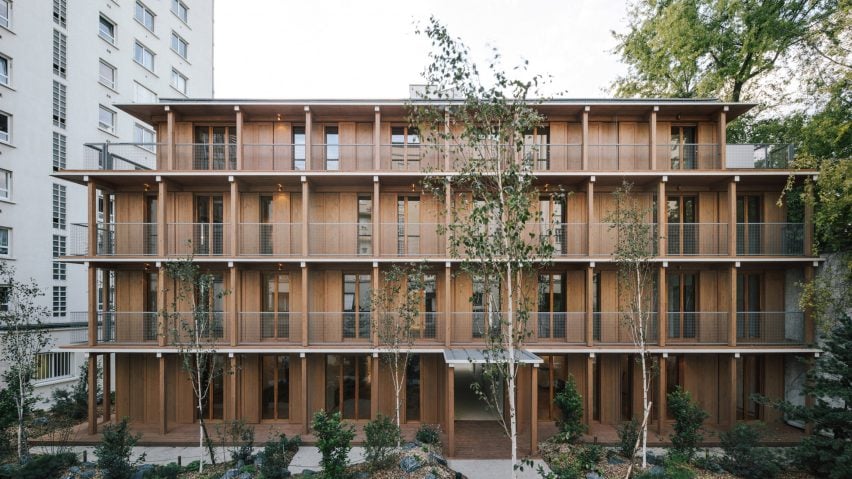
Low-energy living and reduced embodied carbon
As well as ‘fabric first’ and alleviating the urban heat island effect, let’s remember that facilitating behaviours that allow us to adapt to a changing climate is also part of this story. For example, how do the acoustics inside your home allow you to work odd hours, or how can you design spaces not for fixed activities, but the flexibility to allow inhabitants to move around a house as the sun moves across the sky?
Reducing the amount of heat being generated inside a building is a concept that bridges behaviour change and building design. Pretty much everything we plug in is pumping out heat (even a fan, depressingly) so we need more efficient appliances but also to just switch stuff off. If there’s an alternative way to do something without energy, consider it!
Mars Architectes designed the apartment block in Paris (pictured) entirely from wooden modules that are also clad in timber.
This brings us almost to the end of our survey of principles for being a cool designer. There’s just one final thing, arguably the most important.
Definitely do all that stuff above, but if you want to be a really cool designer, you need to not only massively reduce the energy needed to make your projects comfortable and healthy, you also need massively reduce the embodied carbon of your projects. In other words, you need to throw off the duvet that is all those greenhouse gases in the atmosphere.
To our human eyes, carbon dioxide and methane are as transparent as oxygen, but if we could see infrared light, we would see the atmosphere getting more and more opaque. Those greenhouse gases are causing global heating by blocking infrared light from busting out into space, like when your duvet hides the fact that your phone is still glowing when your family thinks you’re asleep. Not cool. Not cool. Not cool.
Find out more about this apartment building ›
Smith Mordak is a multi-award-winning architect, engineer, writer and curator and the director of sustainability and physics at British engineering firm Buro Happold.
Dezeen is on WeChat!
Click here to read the Chinese version of this article on Dezeen’s official WeChat account, where we publish daily architecture and design news and projects in Simplified Chinese.
In a historic neighborhood in the Mexican city of Mérida, Workshop Architects’ ‘Studiolo’ is a traditional yet eclectic home-studio which fuses juxtaposing elements of Yucatecan colonial architecture and 20th-century Italian modernism. A celebration of vibrancy, risk-taking, and iconic design elements, the space serves as a residence and studio for Mexican artists David Serrano and Robert Willson, and perfectly encapsulates both their personal and professional personalities. The loft-style interior is characterized by a simplistic spatiality, enlivened by iconic furnishings and decor including an LC1 Le Corbusier armchair, and vibrant statement elements such as a bright orange bathroom ‘cubicle’ which doubles as a canvas.
all images courtesy of Workshop Architects
The space is modeled after the traditional Italian ‘studiolo’ which during the Renaissance era served as a lavishly decorated palace chamber where owners could retire to read, study and write in privacy. Similarly, Workshop Architects’ ‘Studiolo’ provides its residing artist duo with a place to not only live, relax and socialize, but also to work on their pieces and meet with collectors, gallery owners, and colleagues. Beyond the minimalist, pristine white façade inspired by Italian architect Gio Ponti, the loft-style interior conjures a vibrant and idiosyncratic fusion of historical Yucatecan colonial elements with modernist aesthetics which reflect the duo’s practise with 20th-century pieces in their LA Gallery ‘Downtown’.
In a vibrant and eclectic display, the architects utilize traditional materials in contemporary ways. Along the floor, Yucatecan pasta tile rugs are reinterpreted and randomly ‘thrown’ as if they were fabric rugs, rather than precisely fitted into the space. Different shades of chukum coat the interior walls, their velvety textures and natural tones exuding a sense of dynamism and depth through the space. The windows are made with black ironwork and transparent glass alluding to functionalist architecture and connecting the interior spaces to the gardens, generating cross ventilation.
the loft-style interior is characterized by a simplistic spatiality
Workshop Architects enlivens the simplistic spatiality with bold sparks of color and iconic design elements. On the open plan ground floor living area, furnishings include a Jean Prouvé style table in the work area, an LC1 chair by Le Corbusier and a Verner Panton lamp in the living room, vintage pieces from the 1940s by Woodard in the dining room, and SMEG appliances and a lamp by Wilhelm Wagenfeld in the kitchen. Floating in space, an orange glass cube emerges as an unexpected element, doubling as a half bathroom and a canvas for drawing and experimenting.
In the monochromatic rear garden, a statement pink Roly Poly chair by Faye Toogood sits beside a black pool that recalls the architecture of Mies van der Rohe. A subtle yet sculptural staircase elegantly winds to unite the communal ground floor space with the private bedroom upstairs. The bed floats in the center of the space beside a Gio Ponti lamp, angled to overlook the patio and terrace. The space also includes a wet room, walk in closet and laundry room.
Yucatecan pasta tile rugs are reinterpreted and randomly ‘thrown’ as if they were fabric rugs